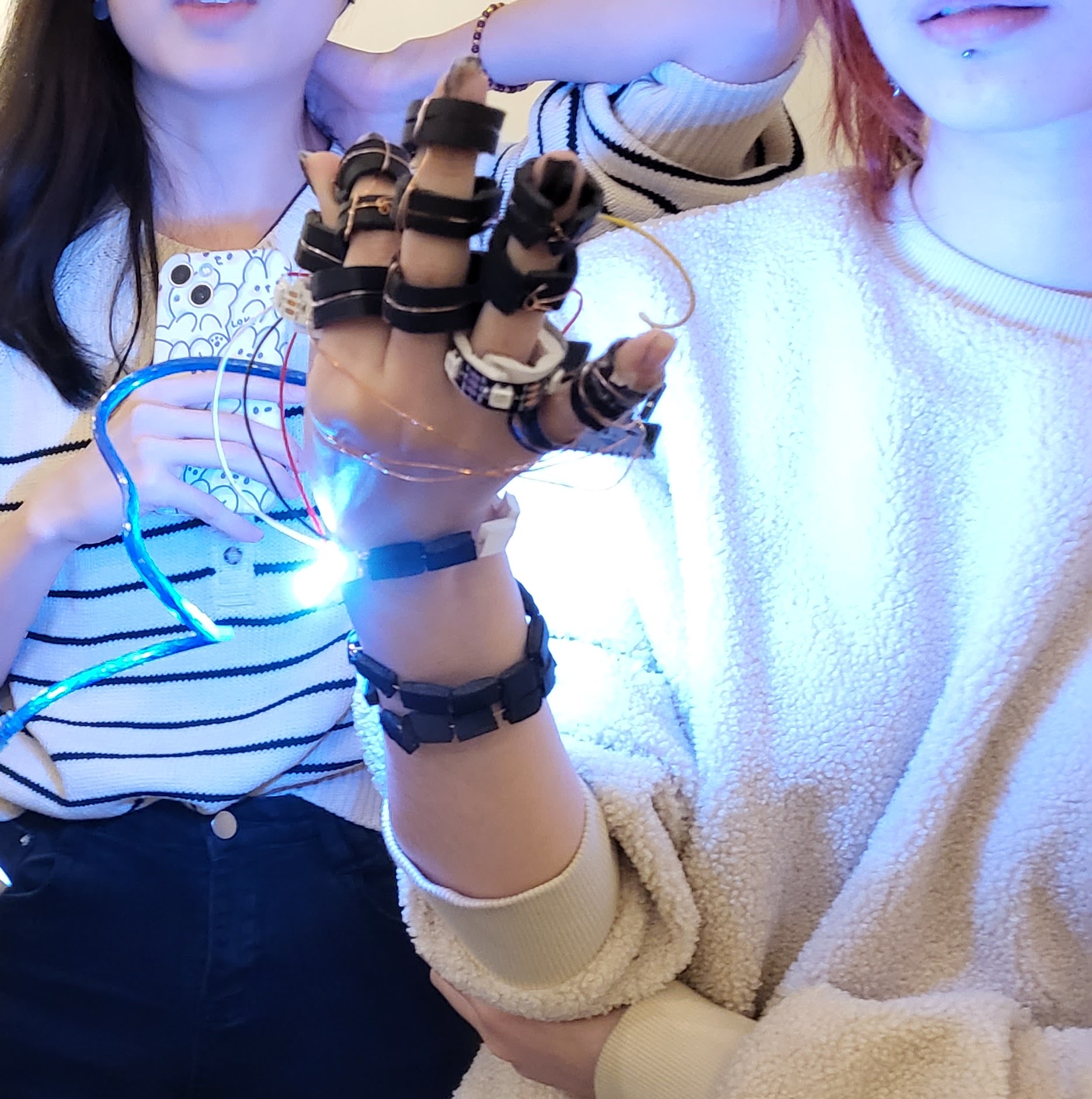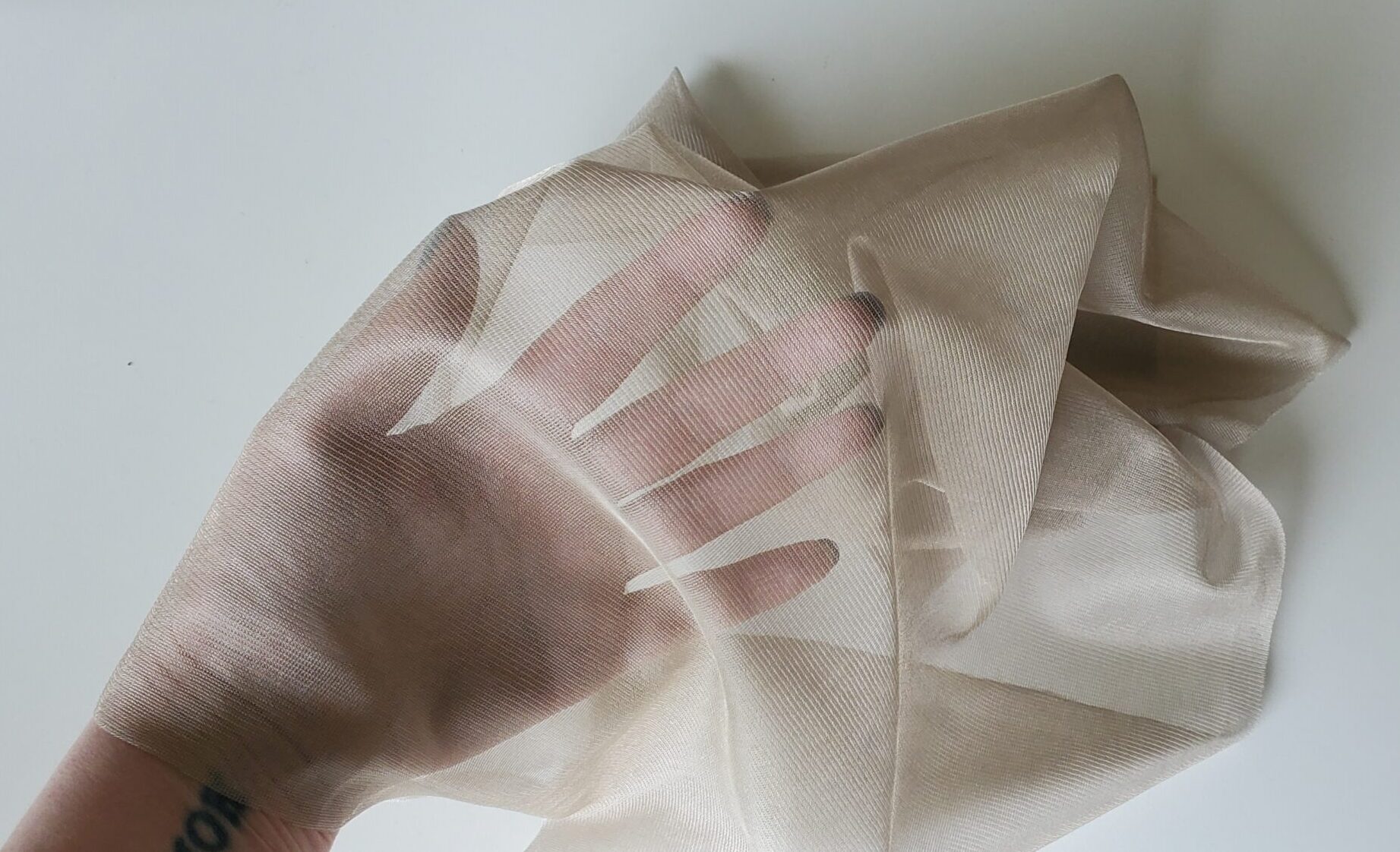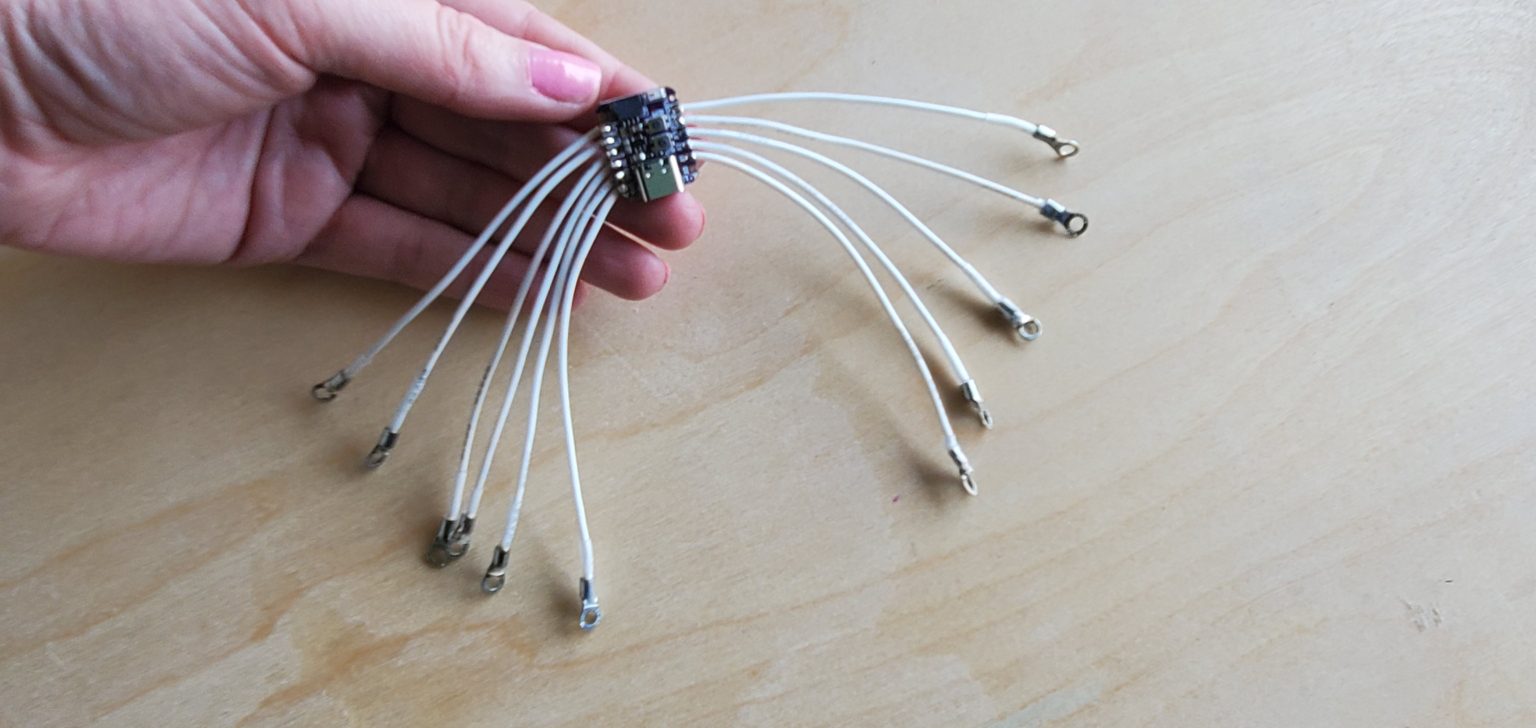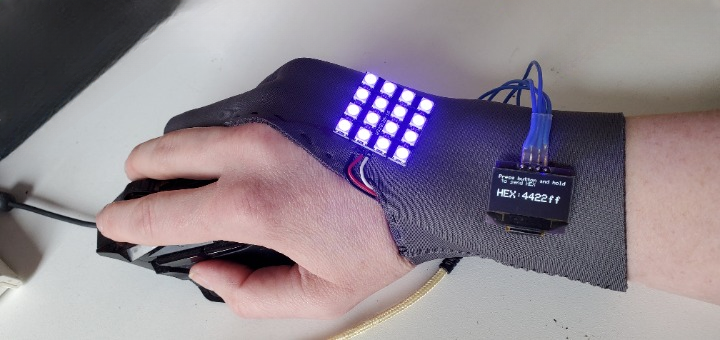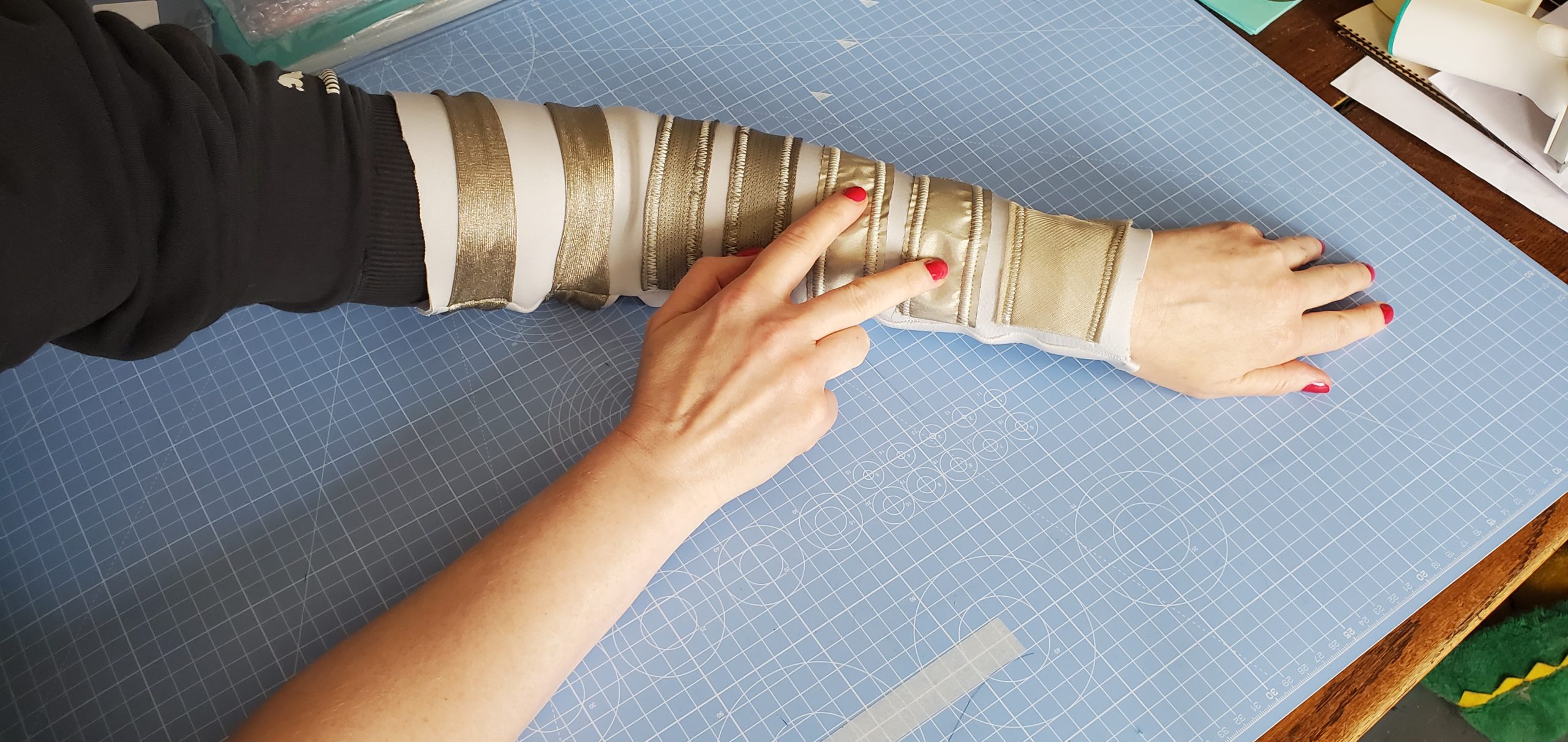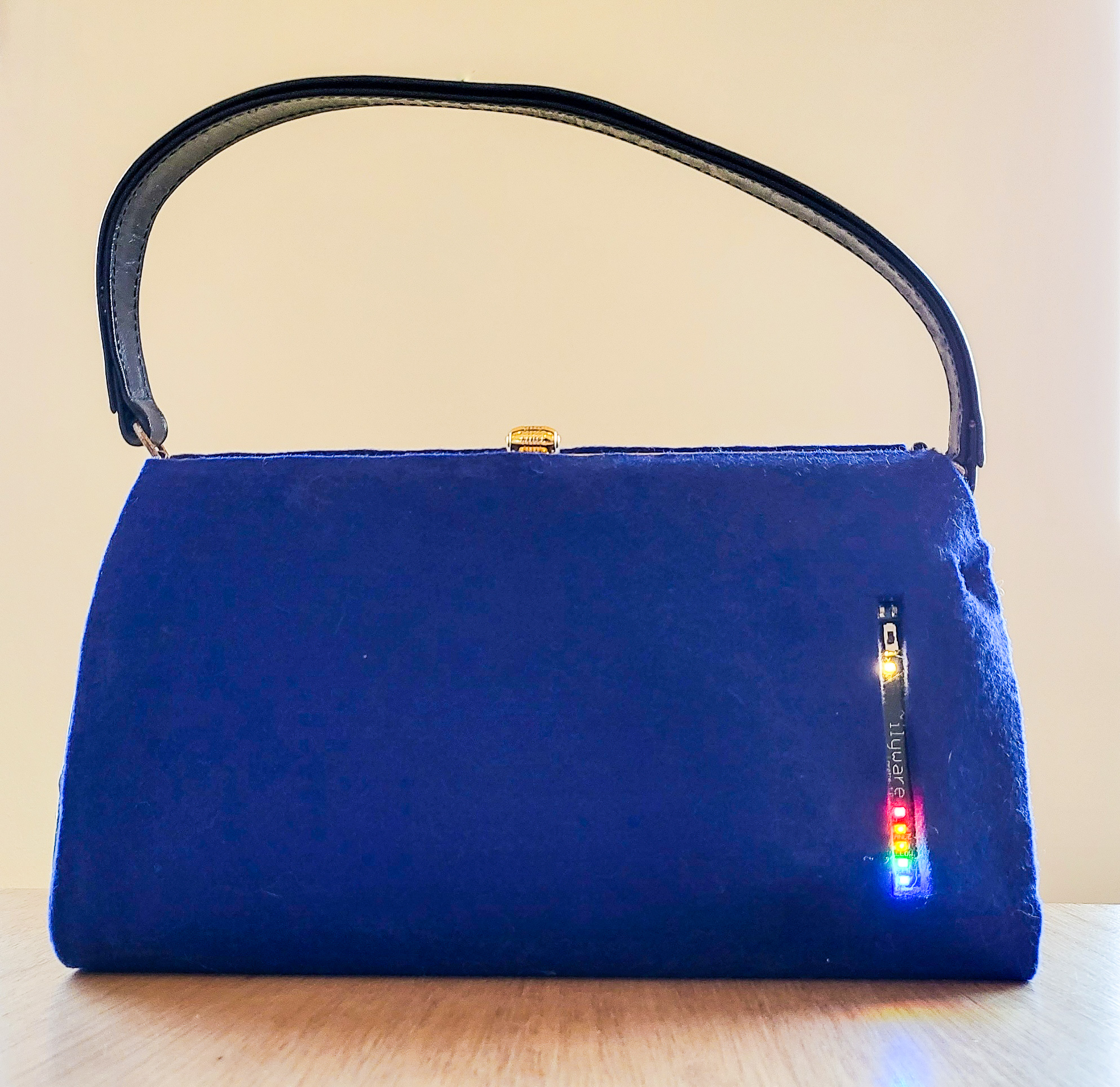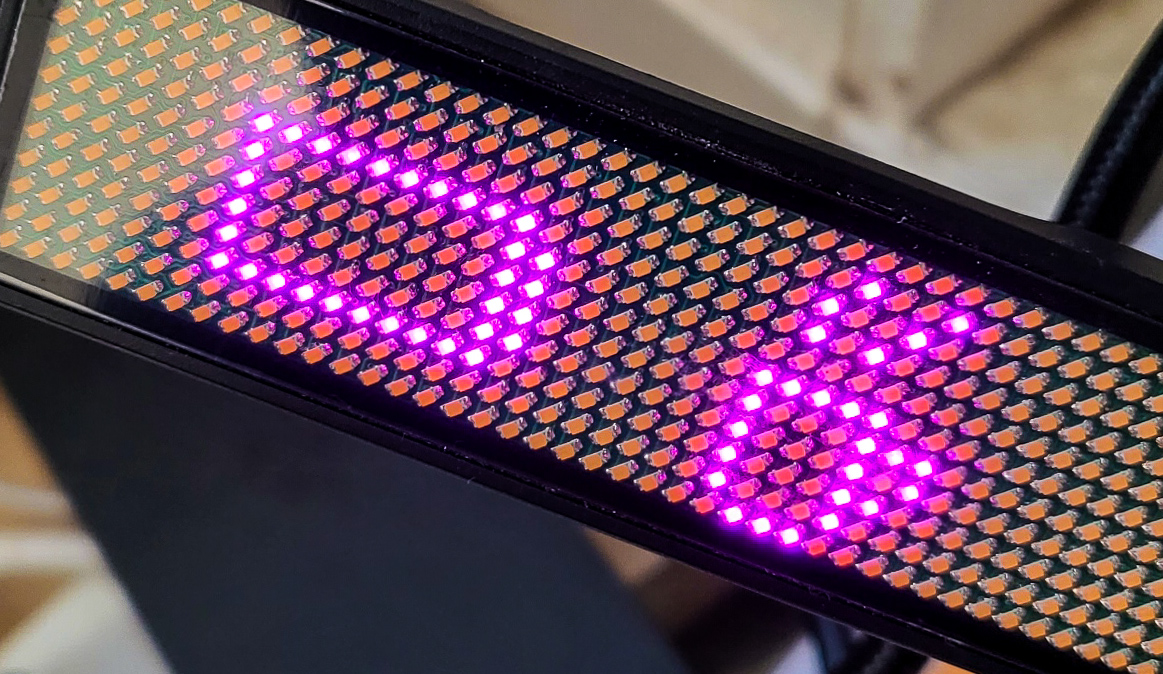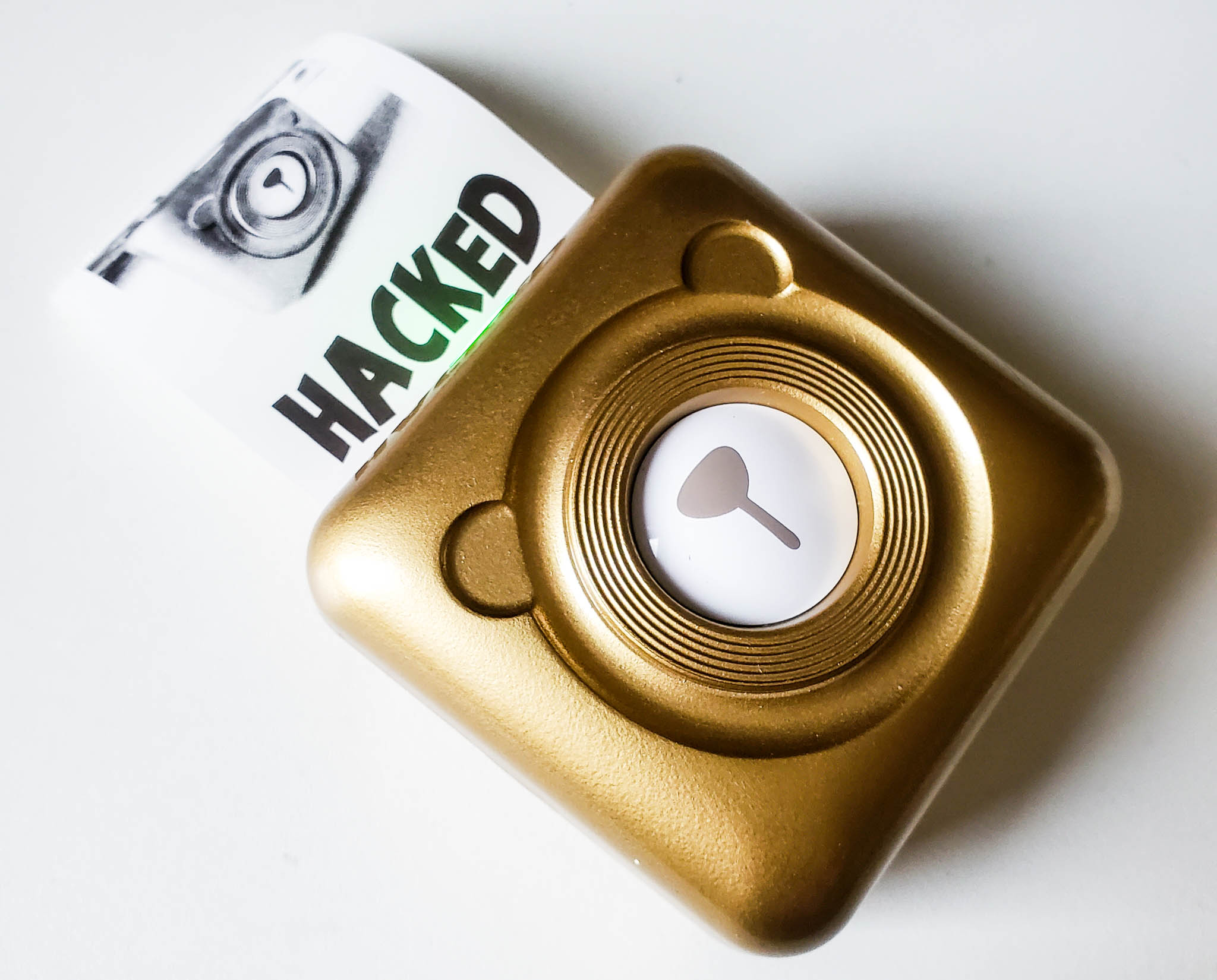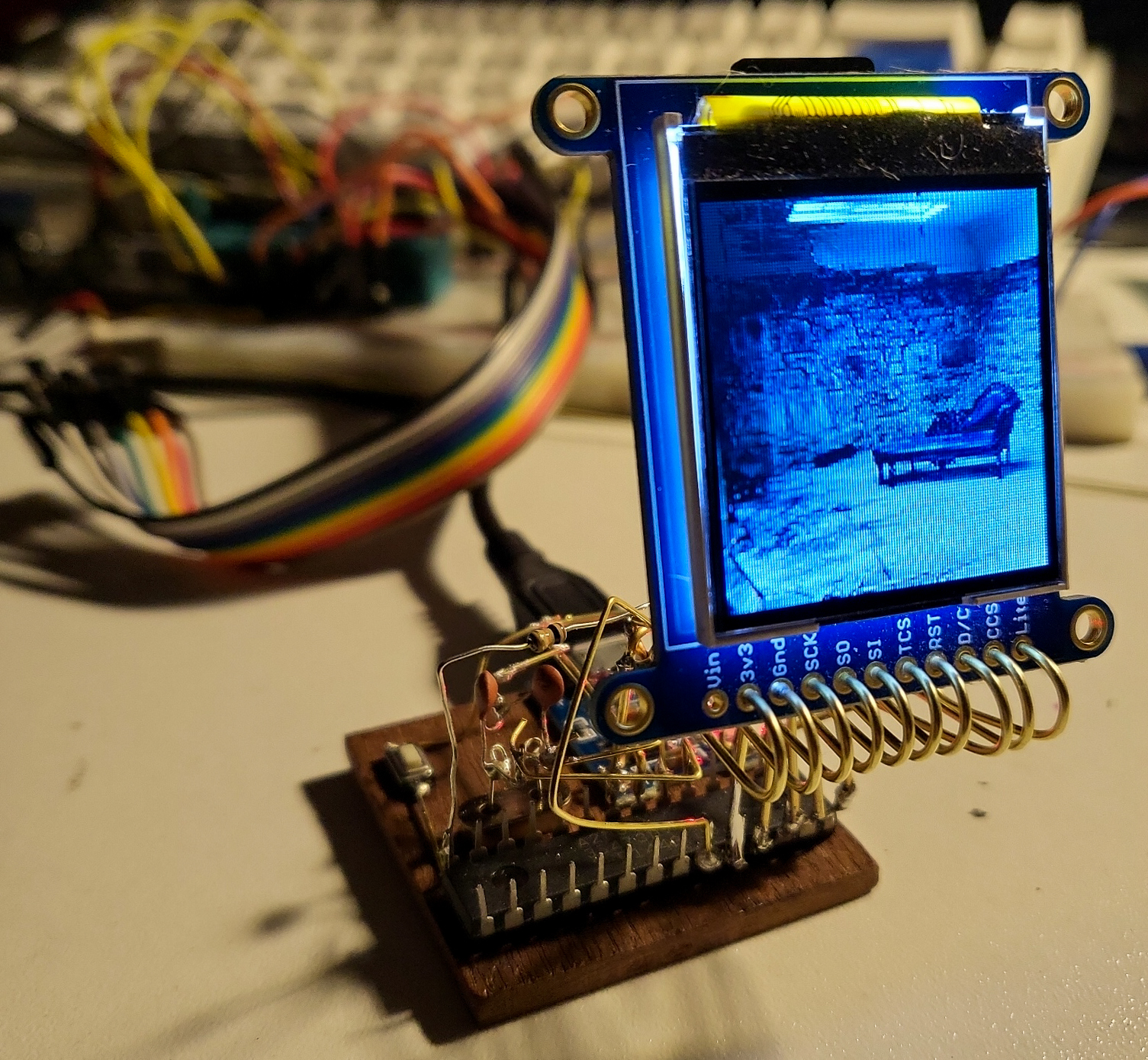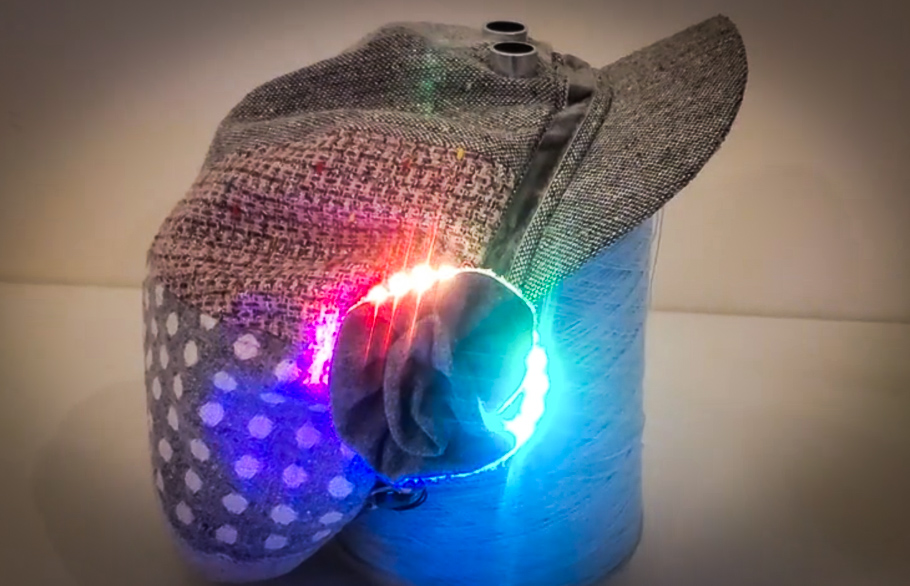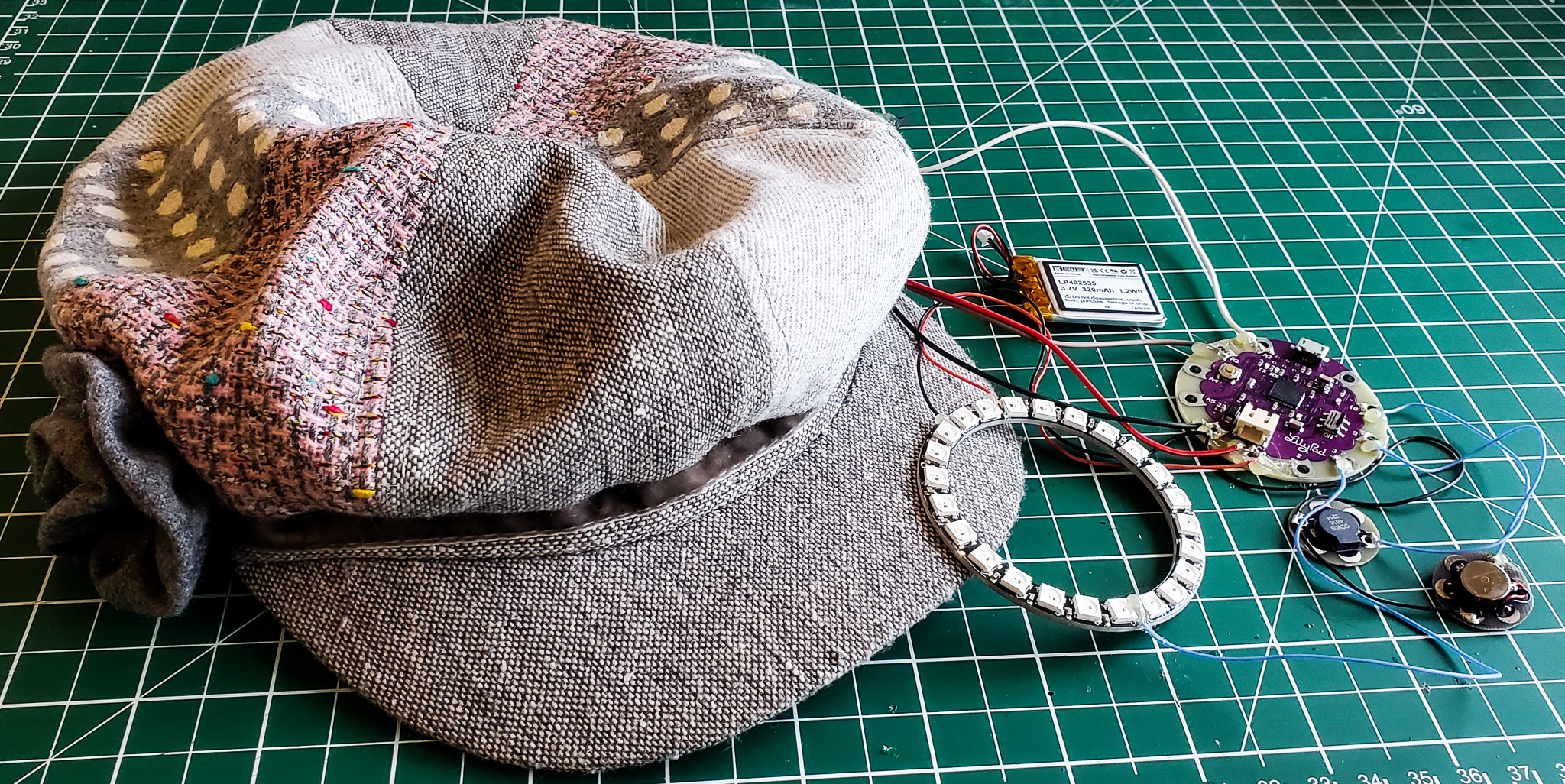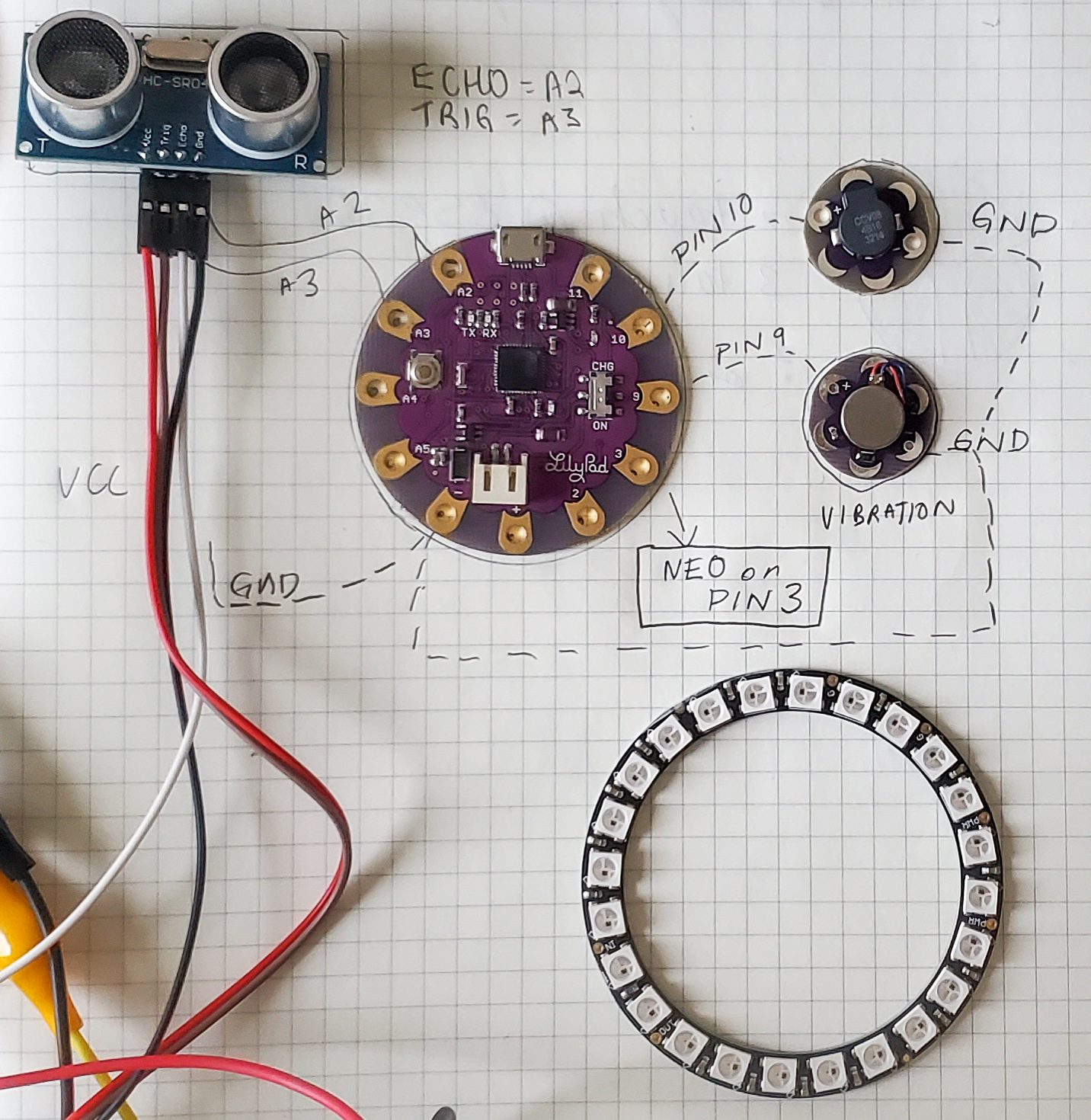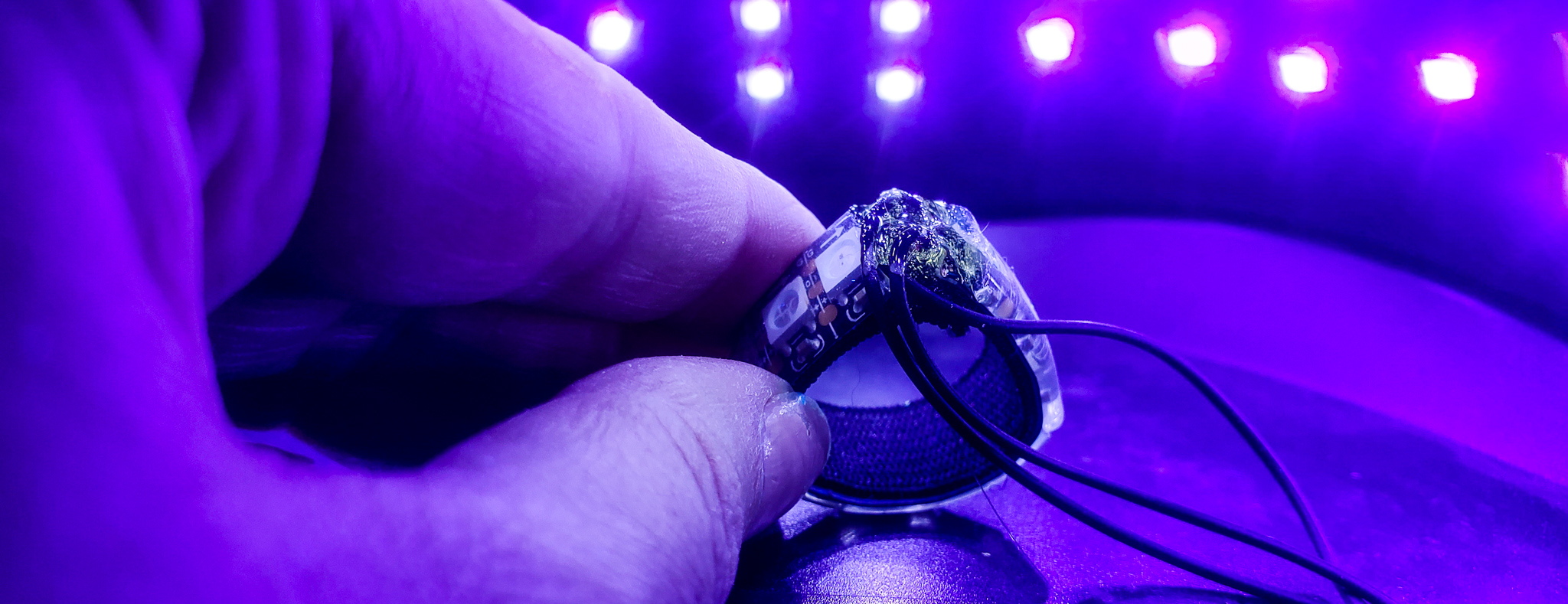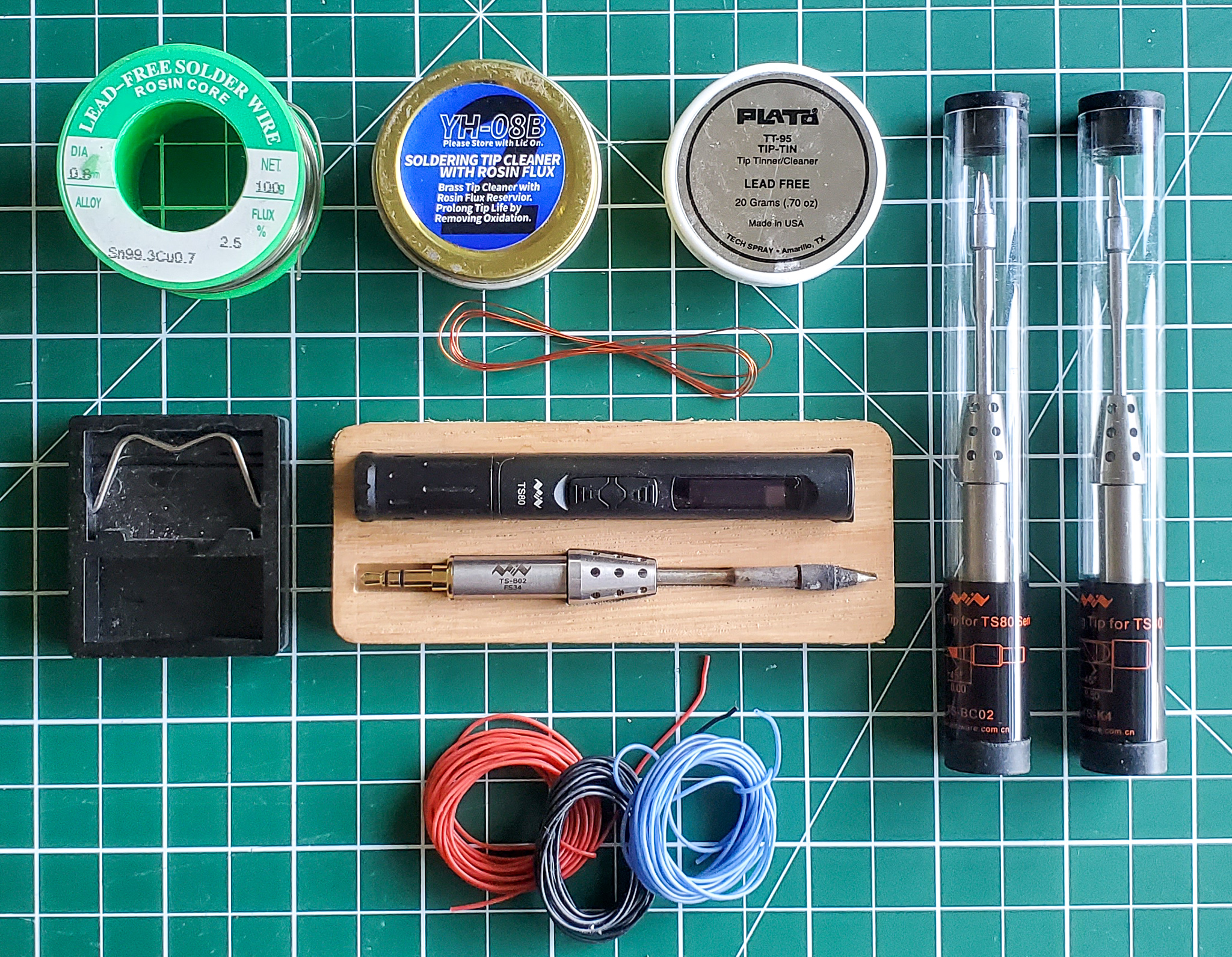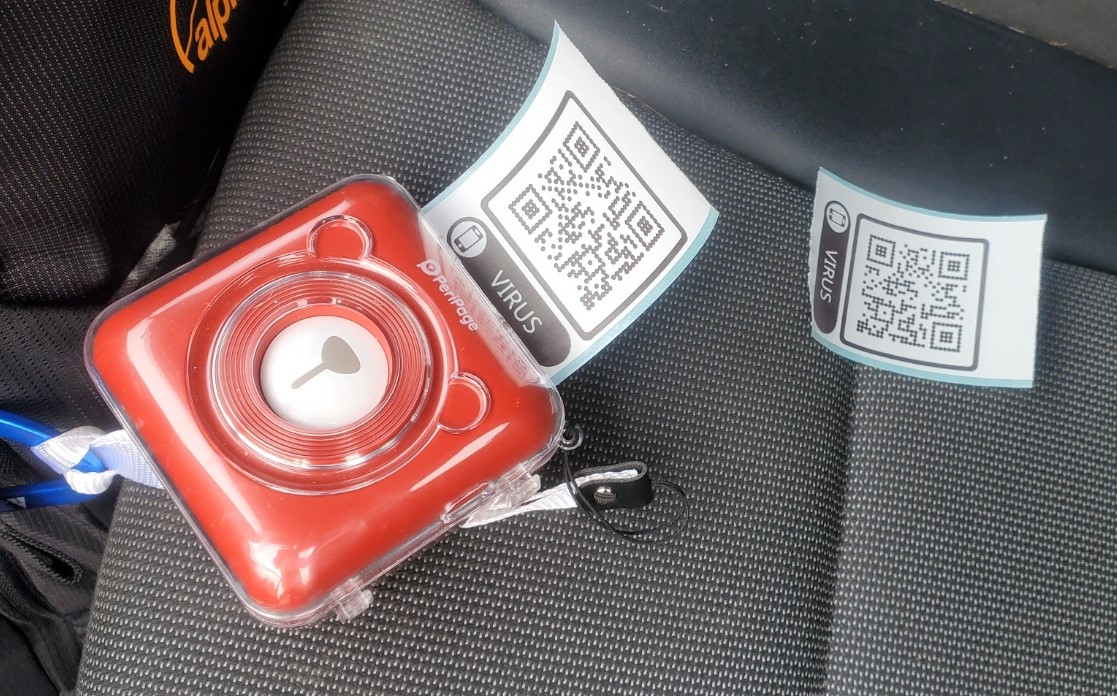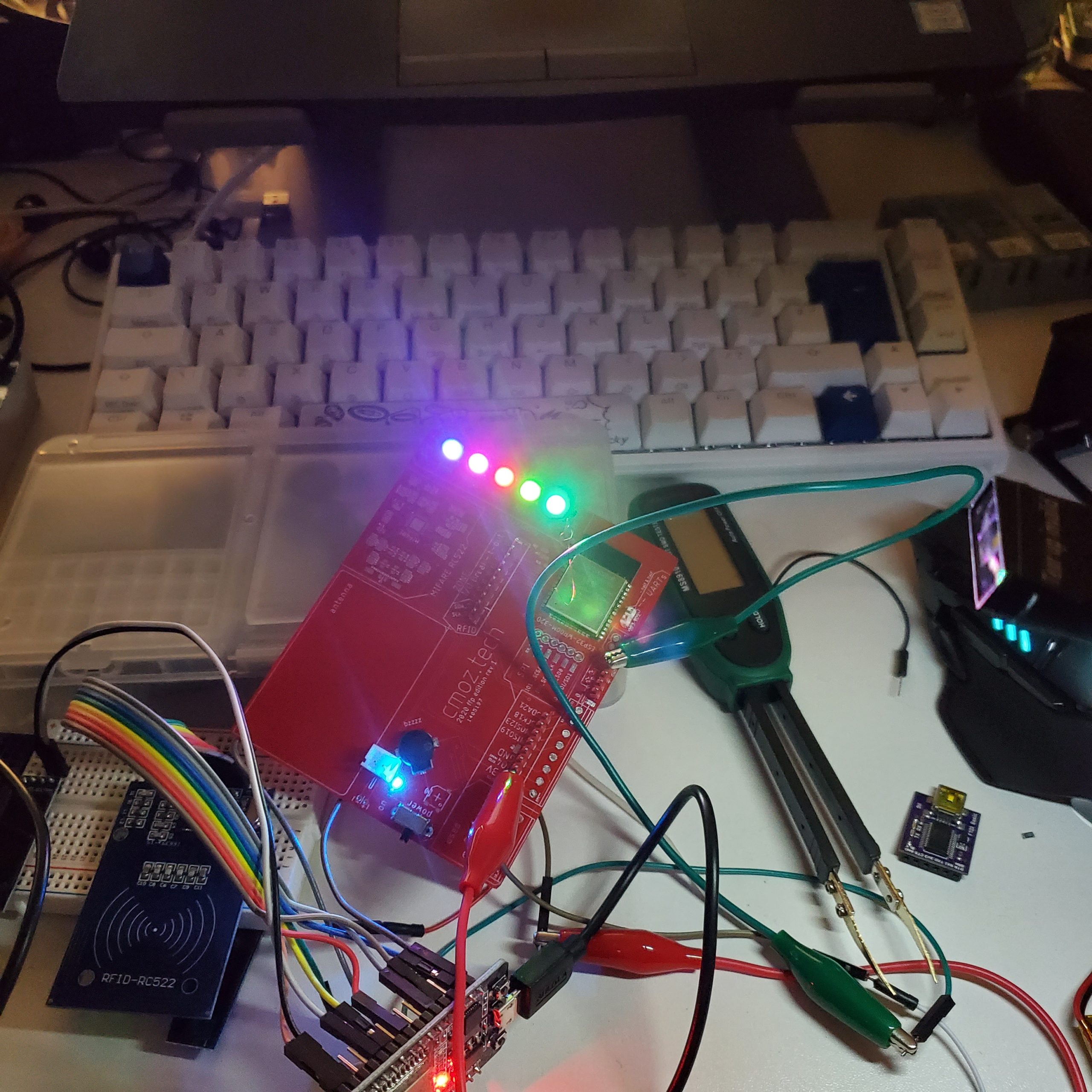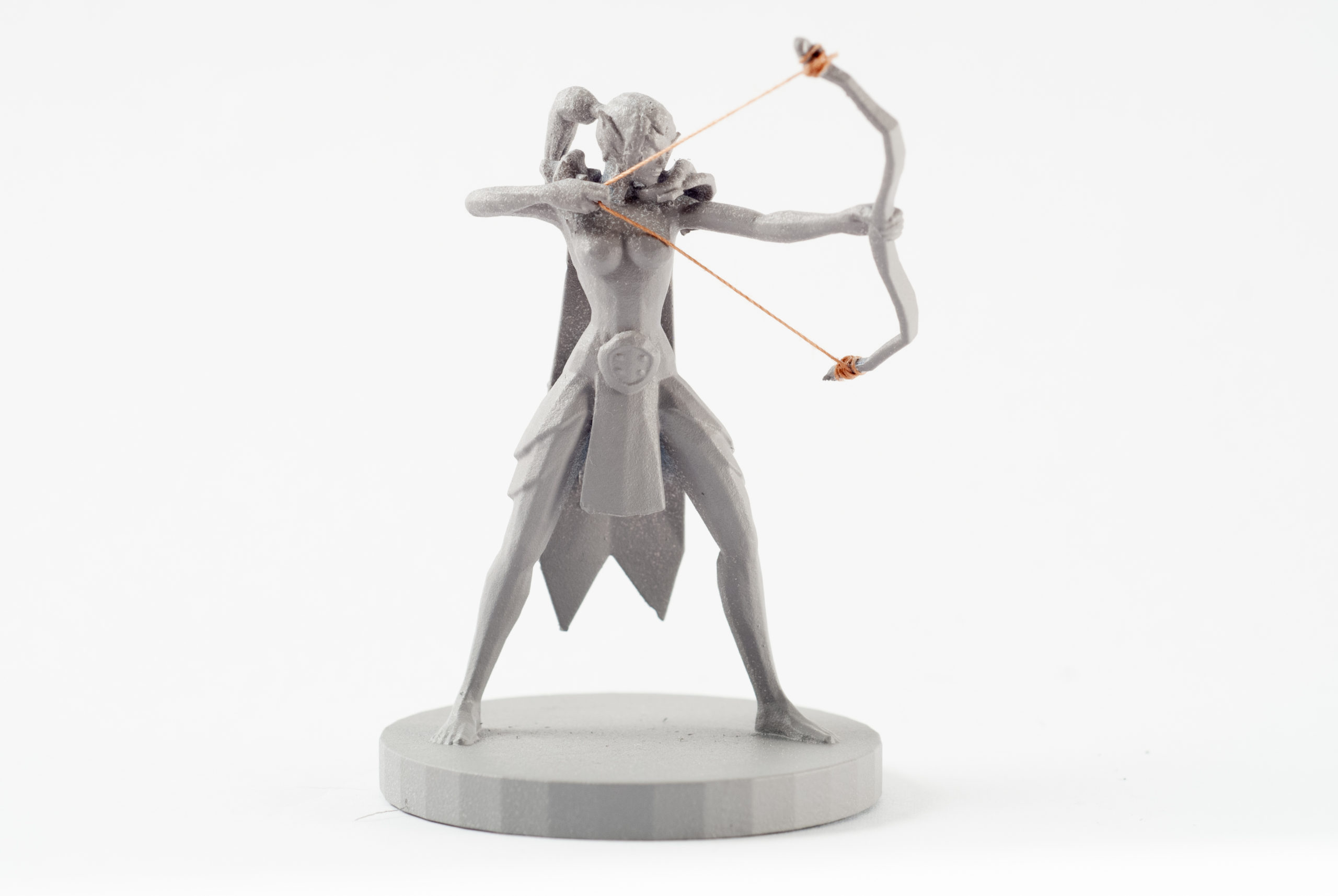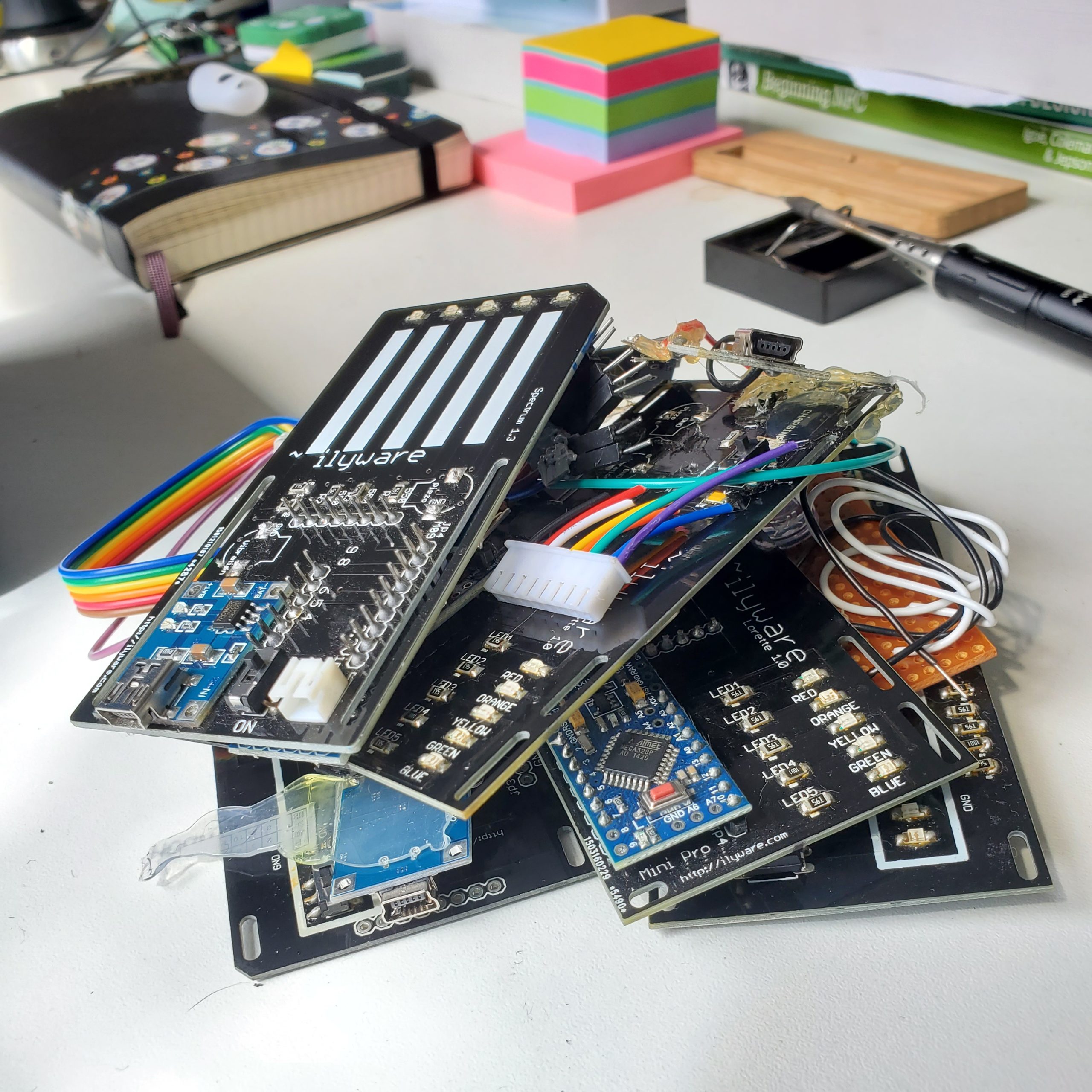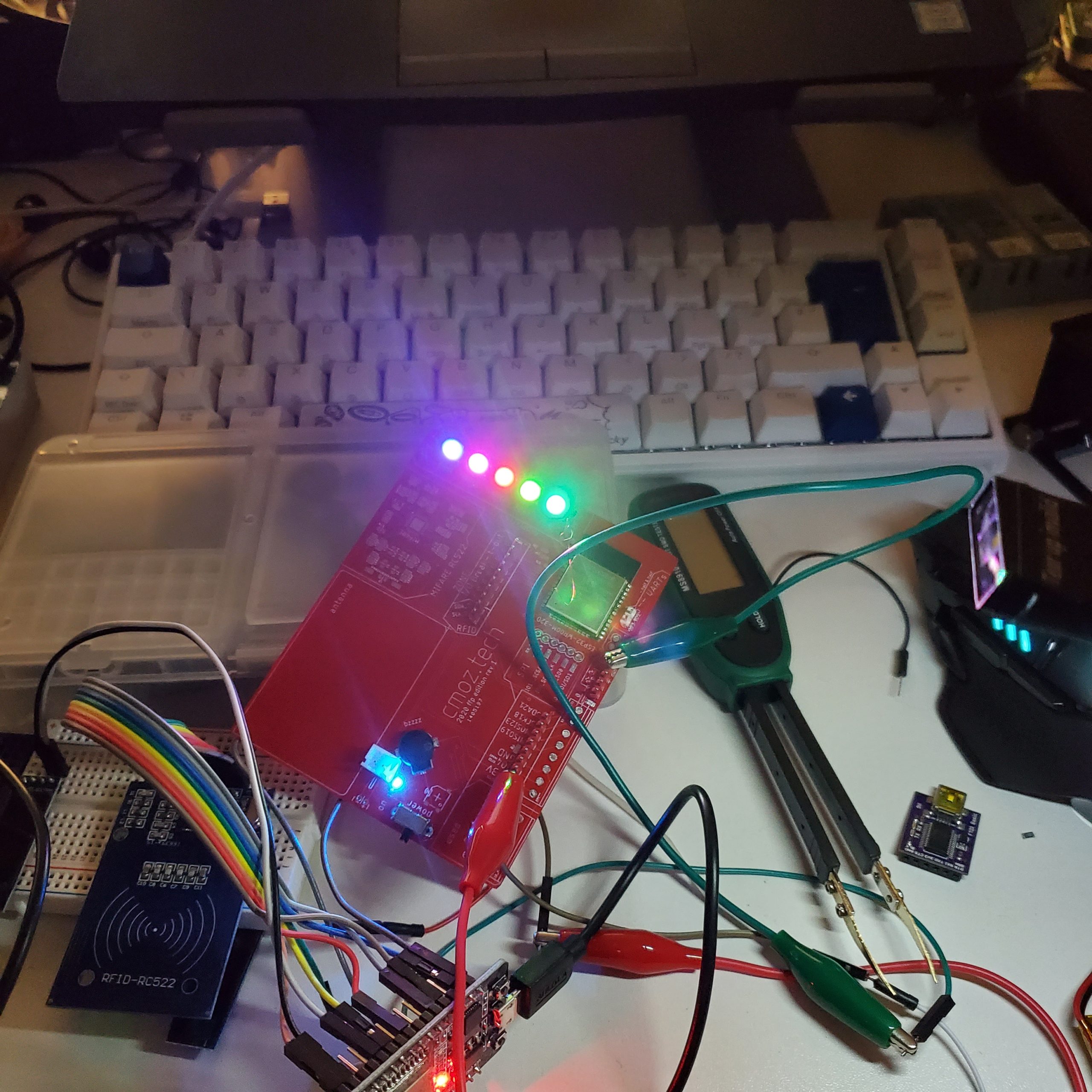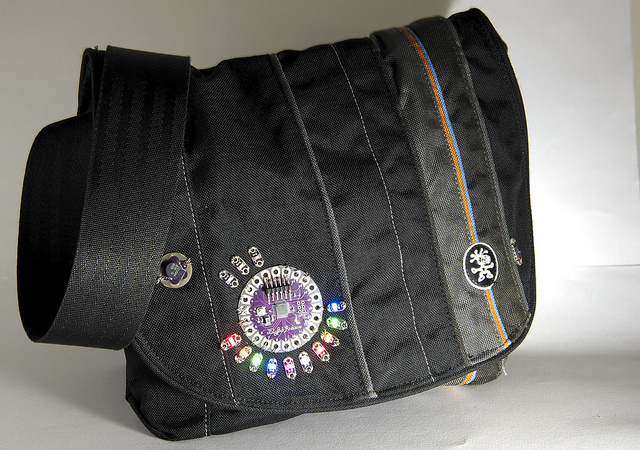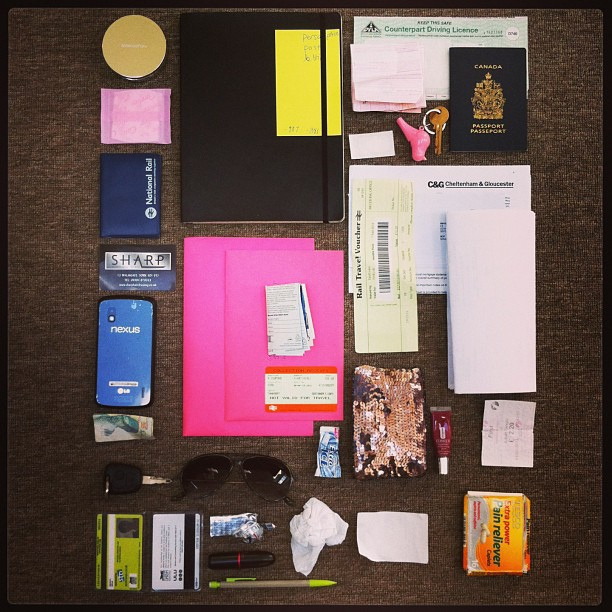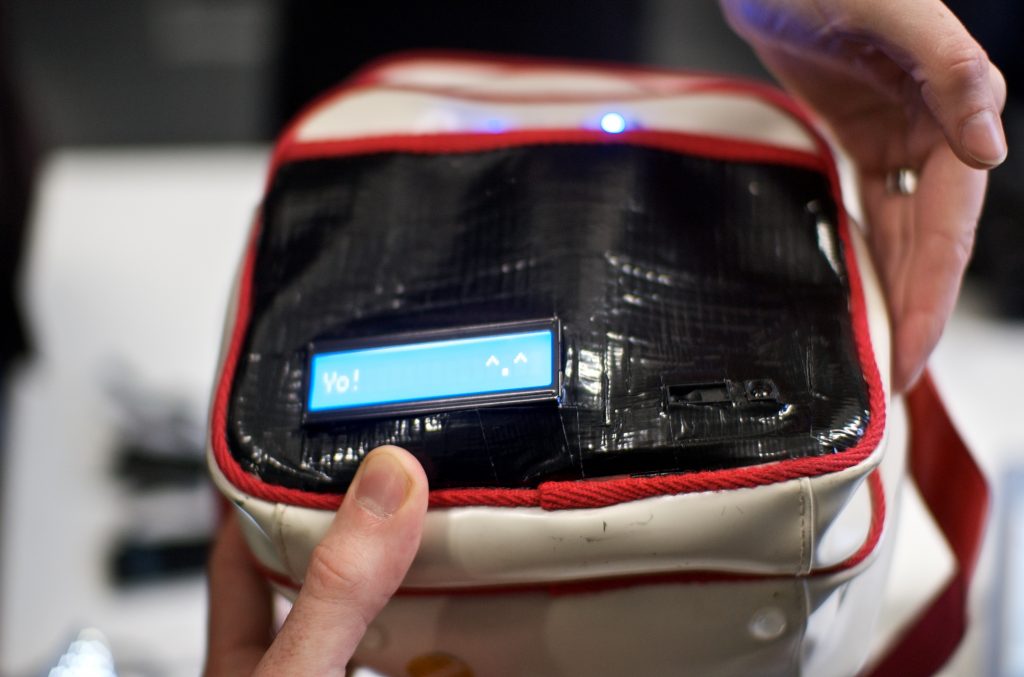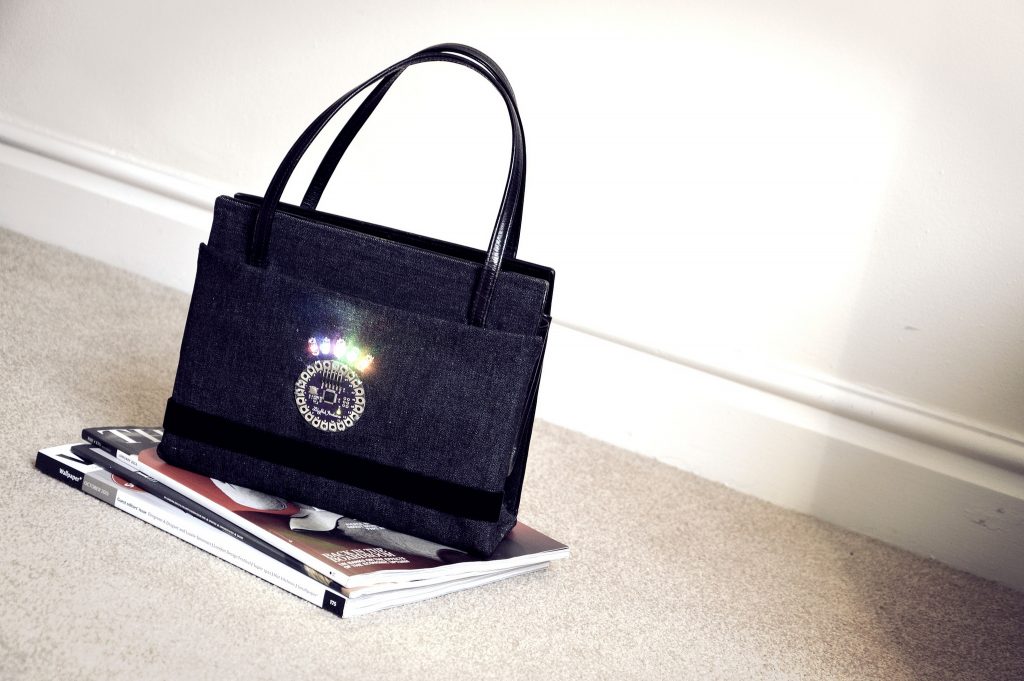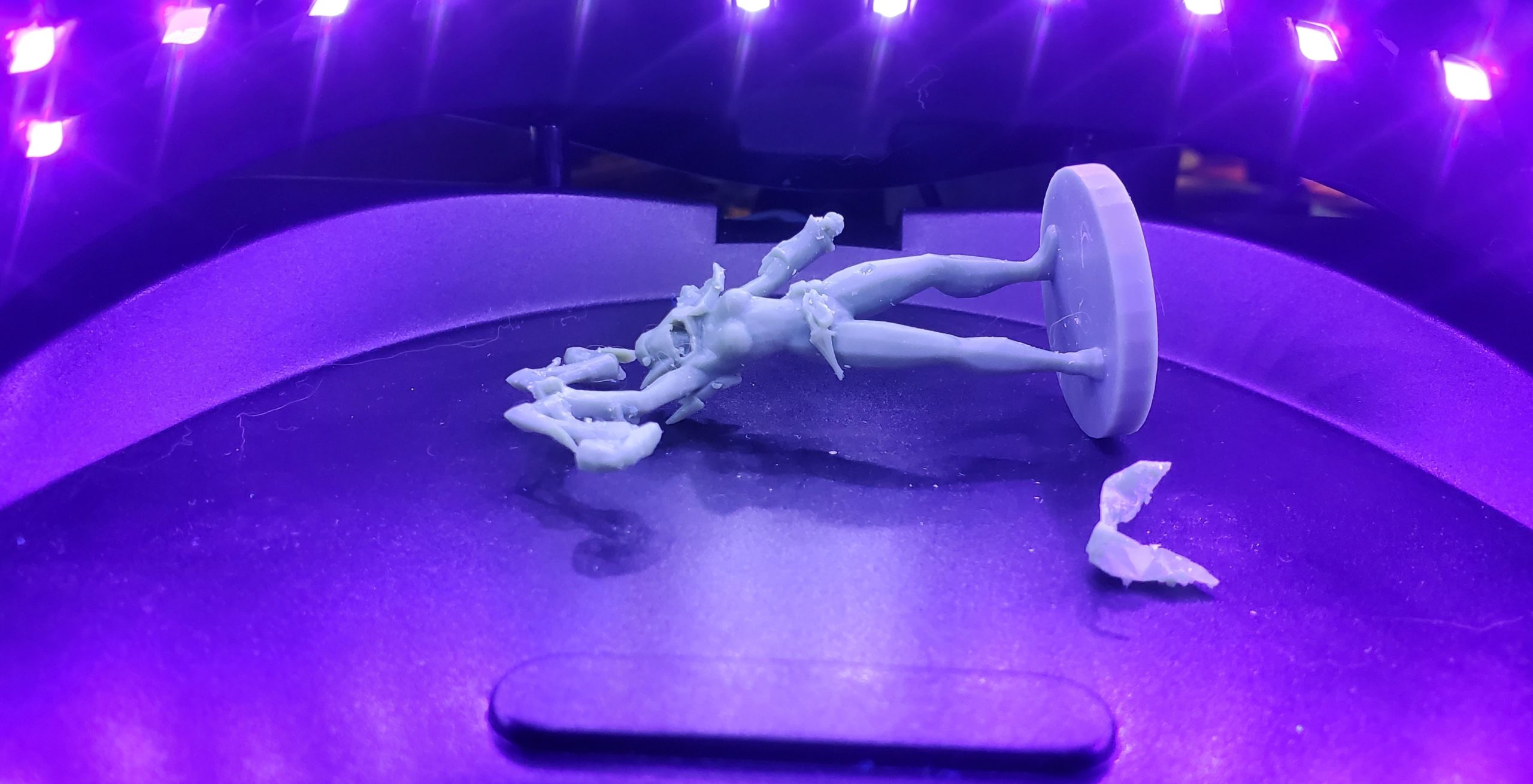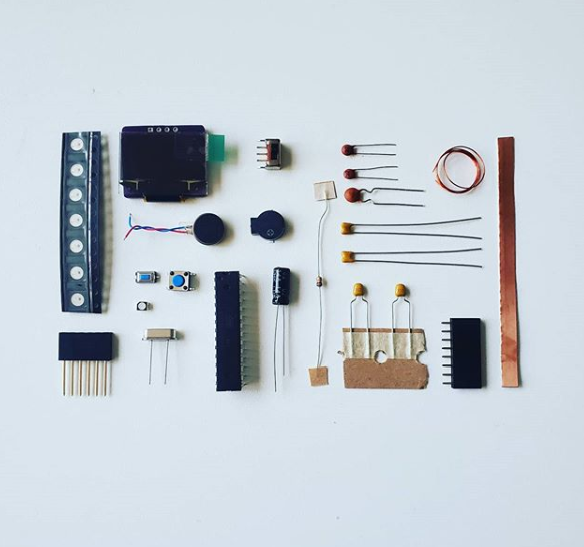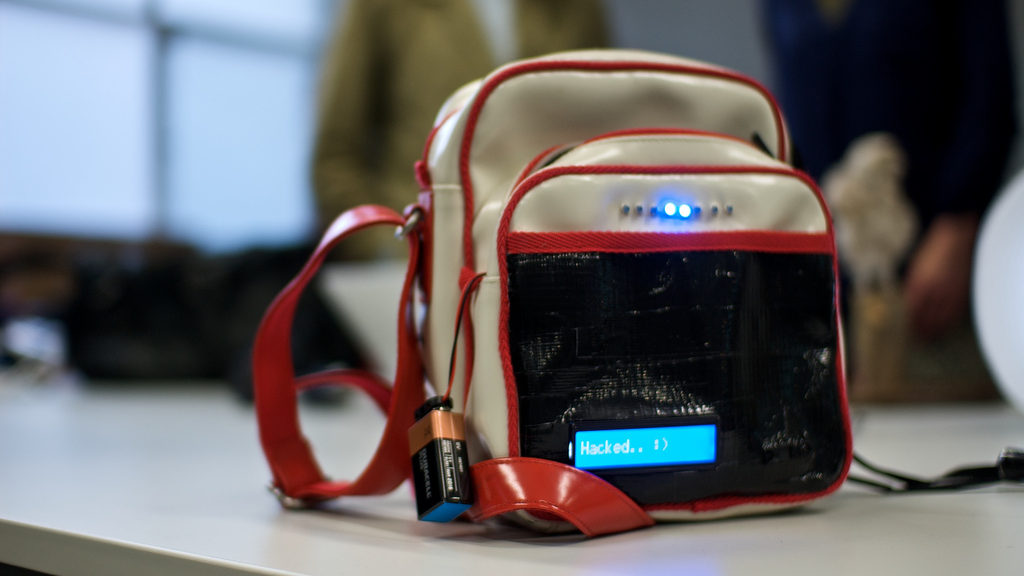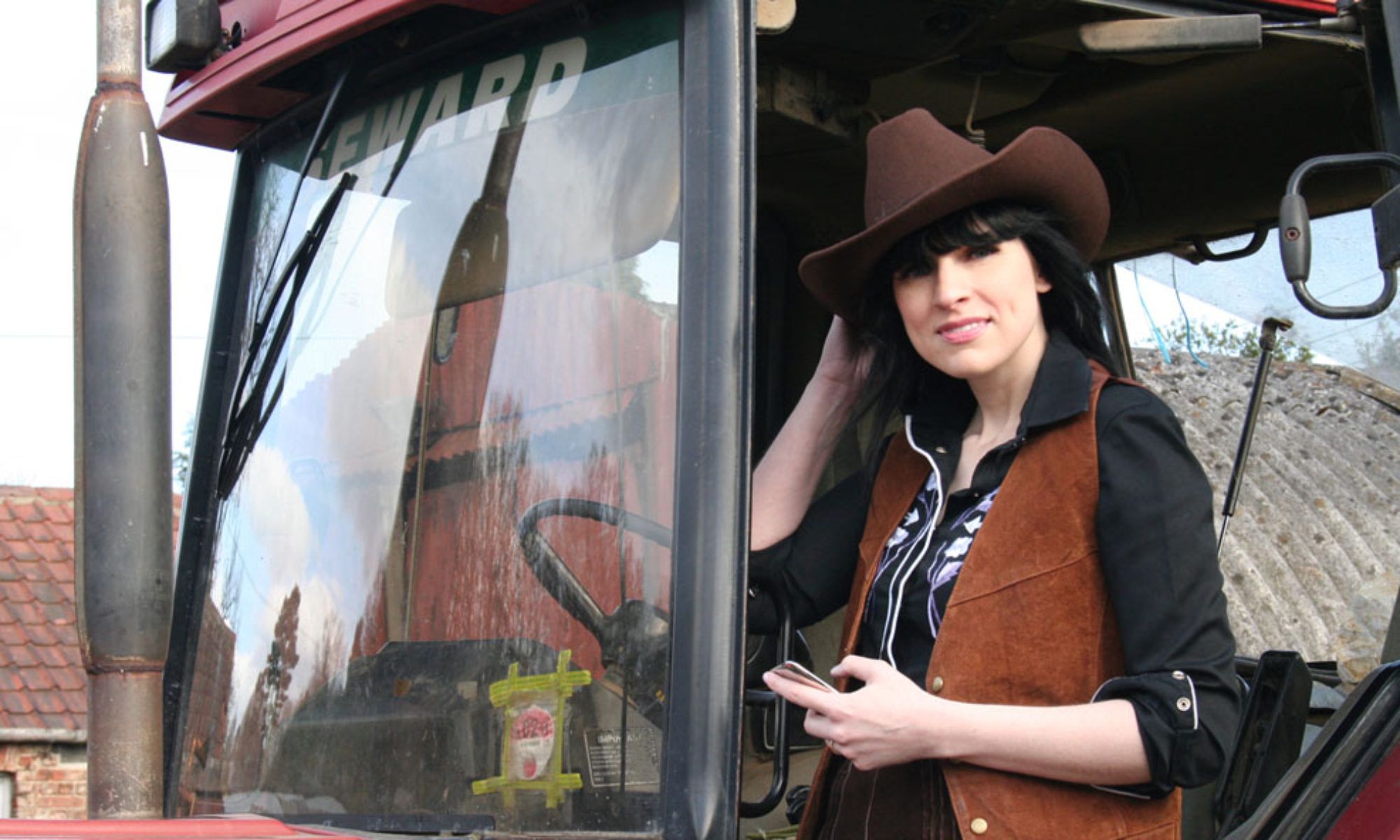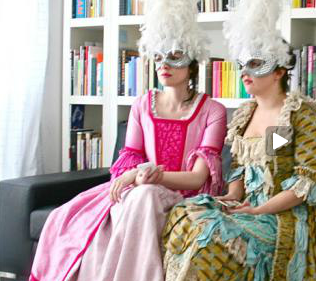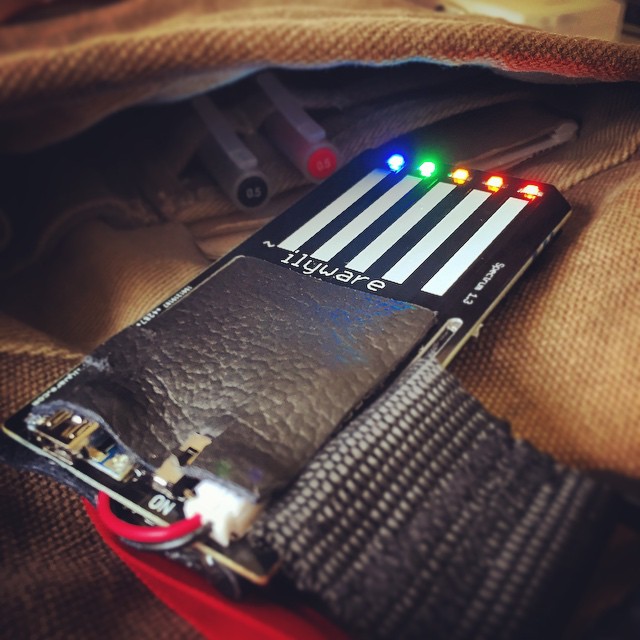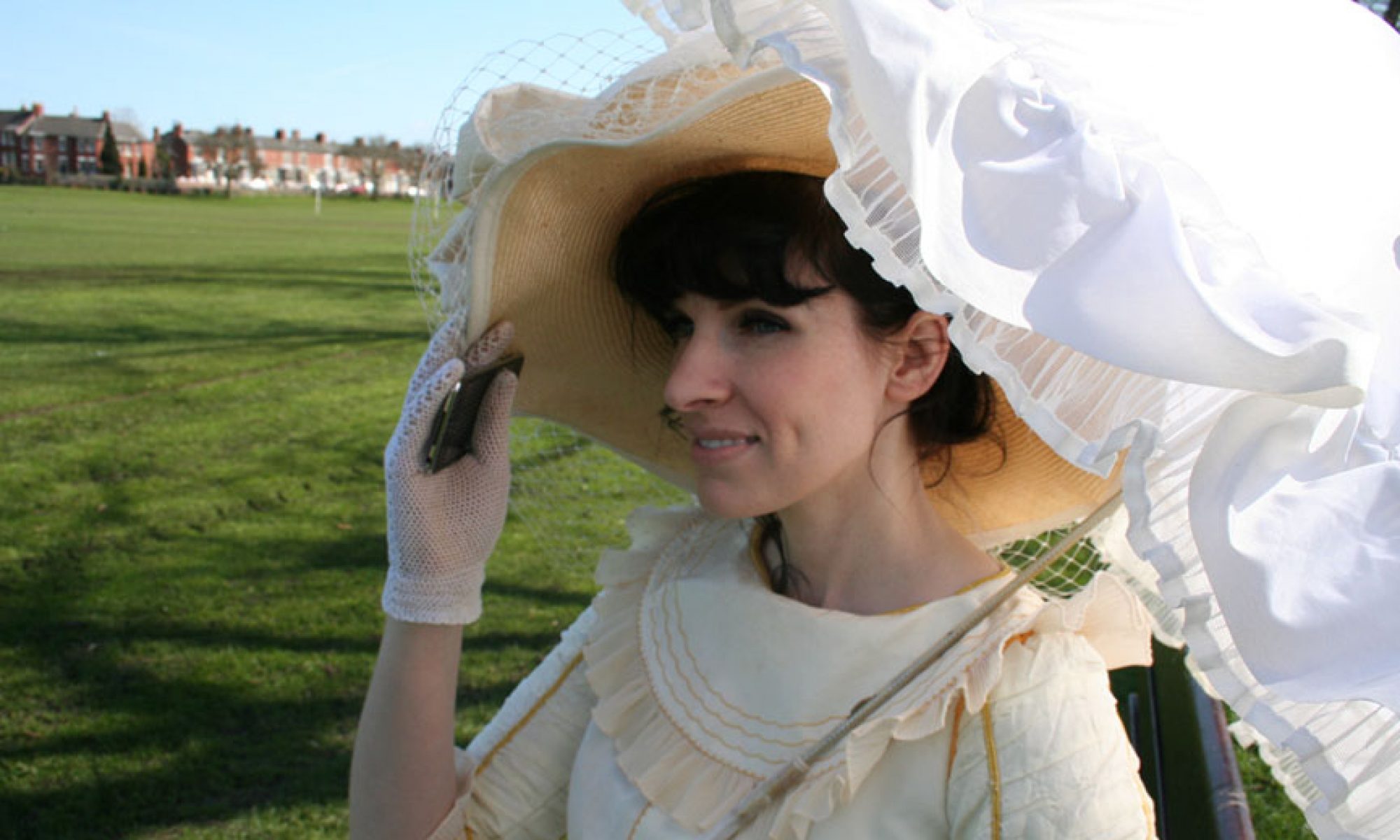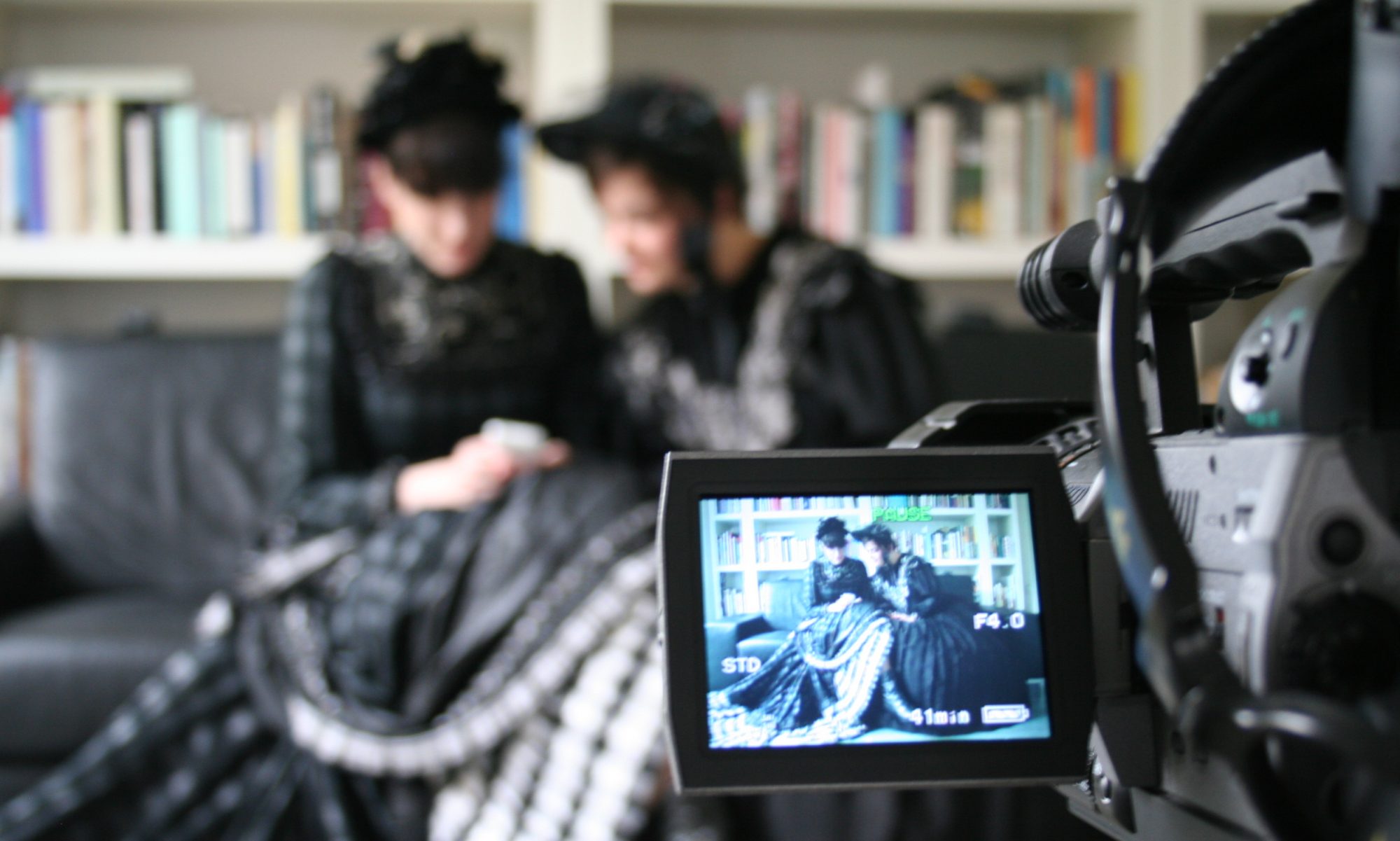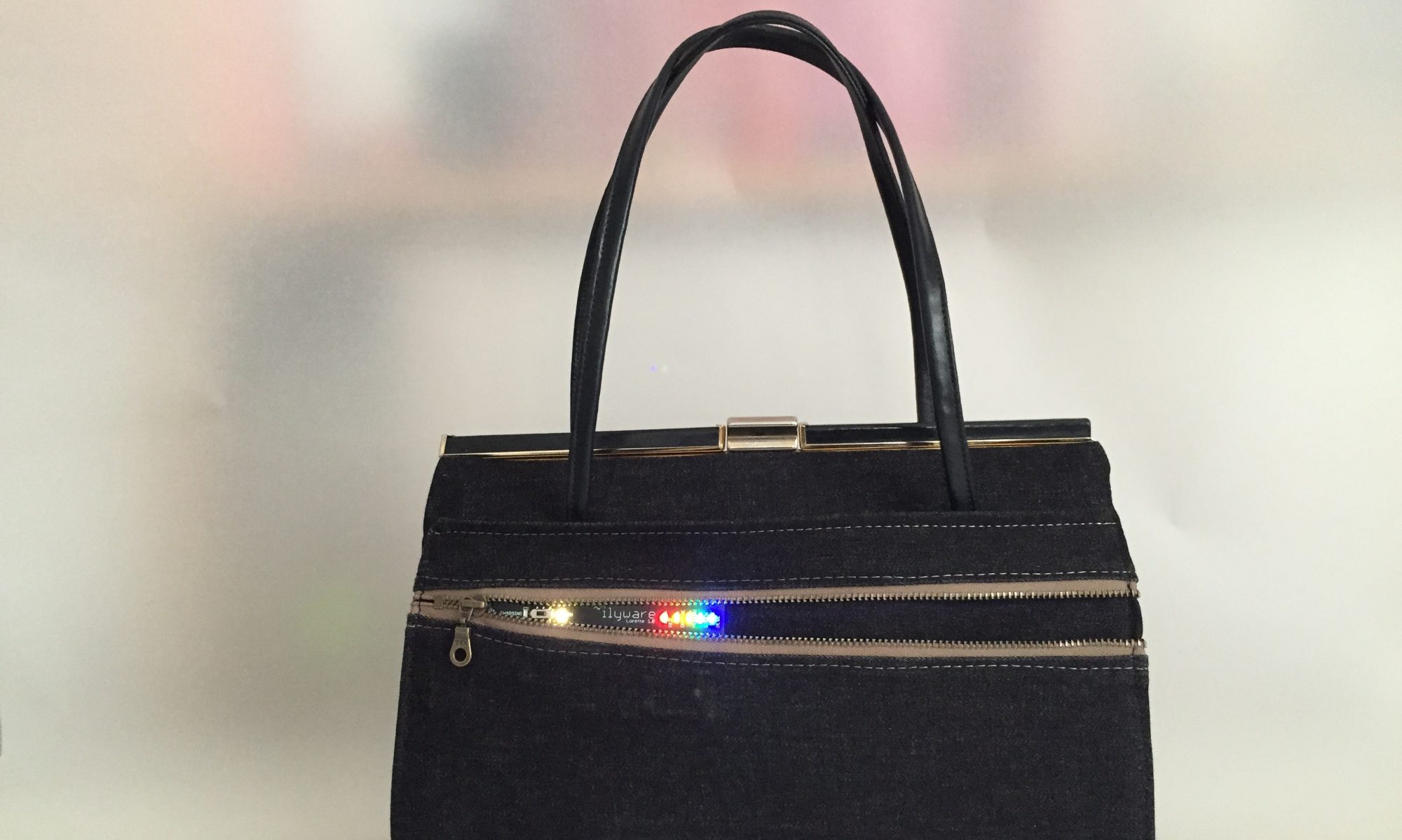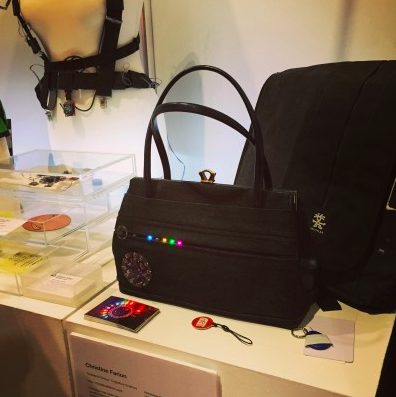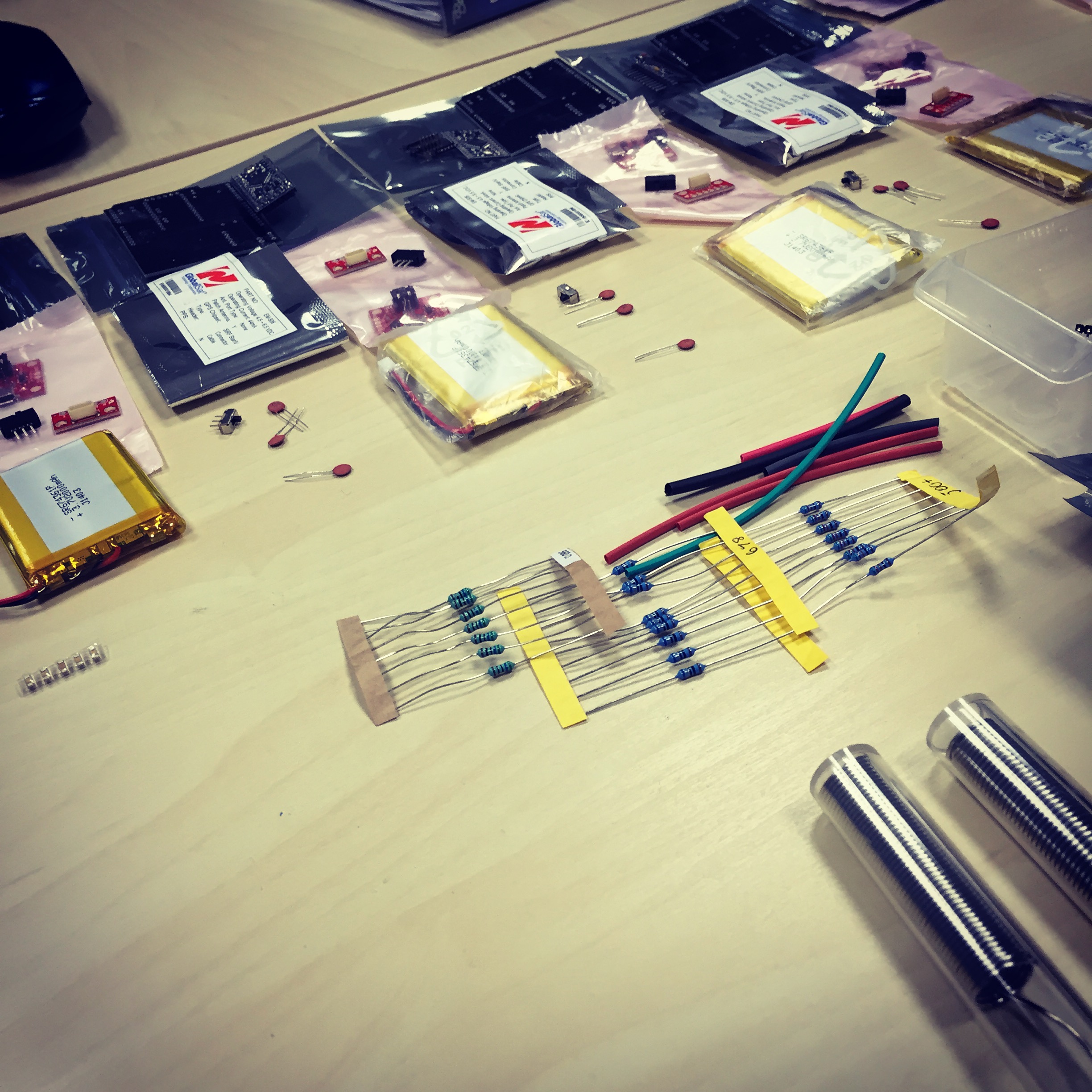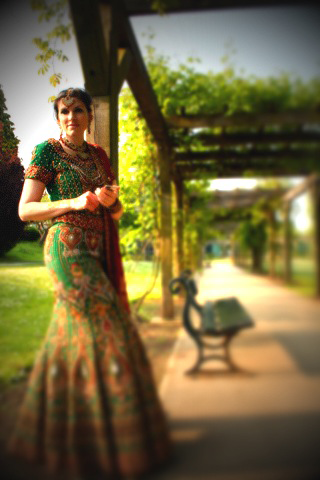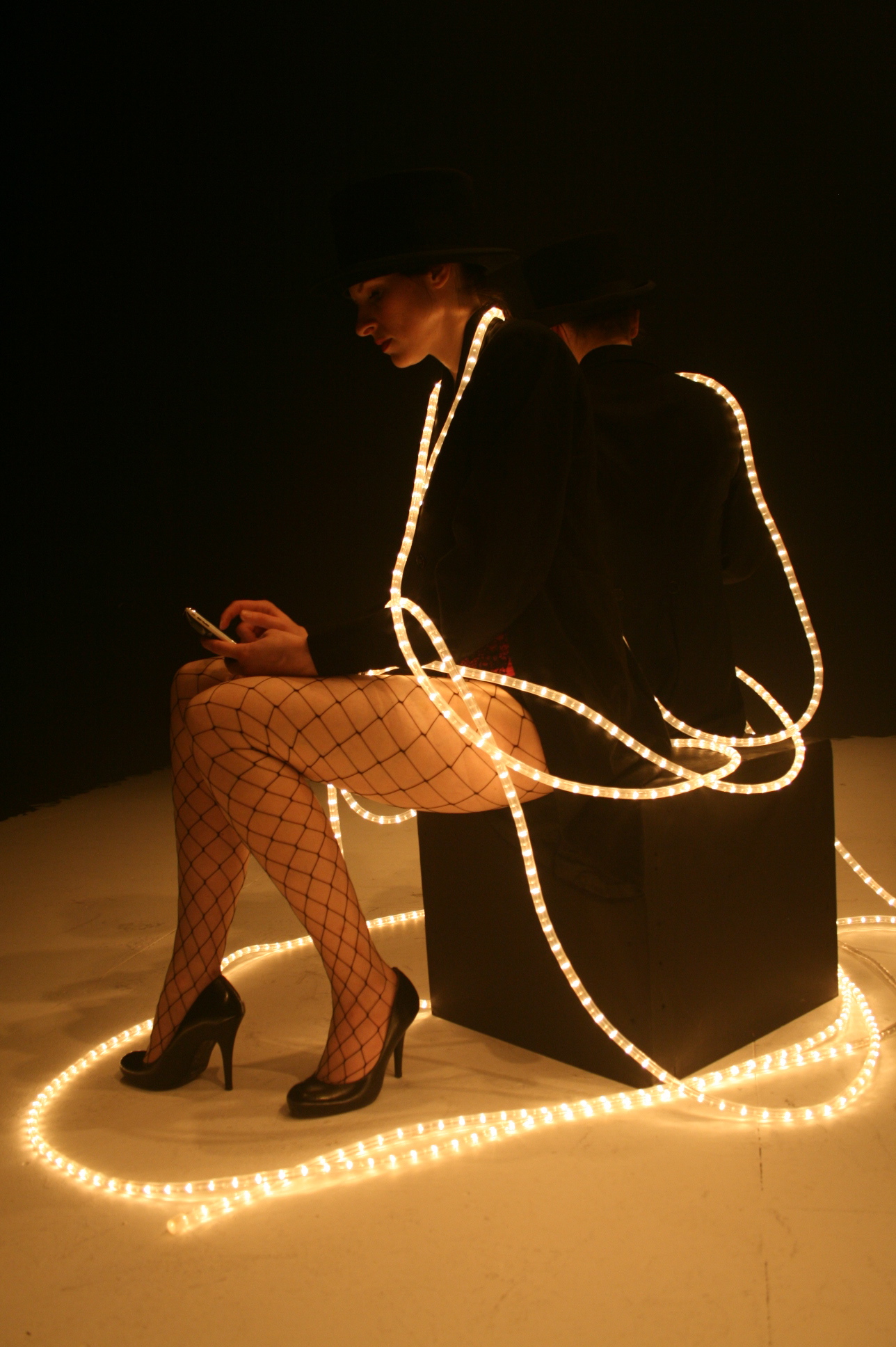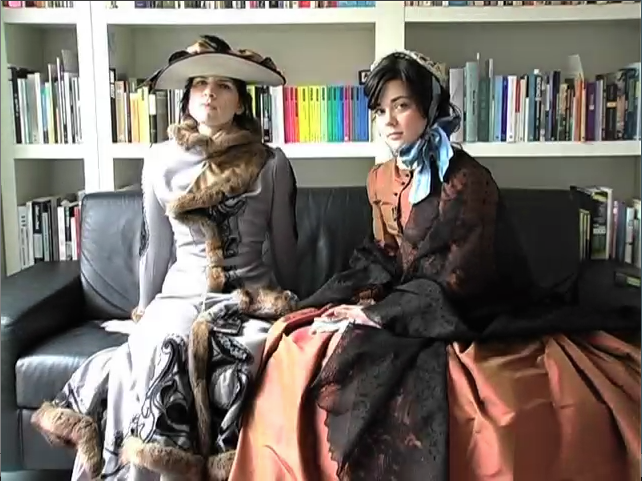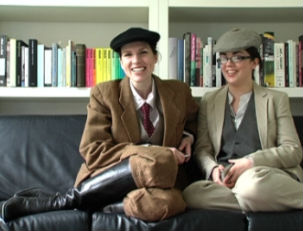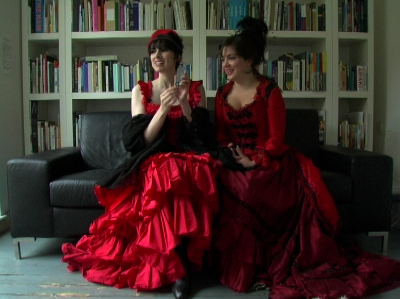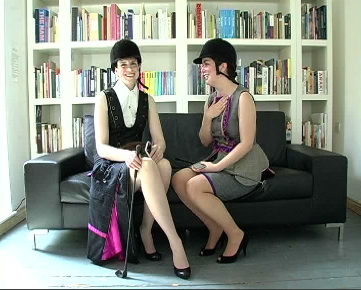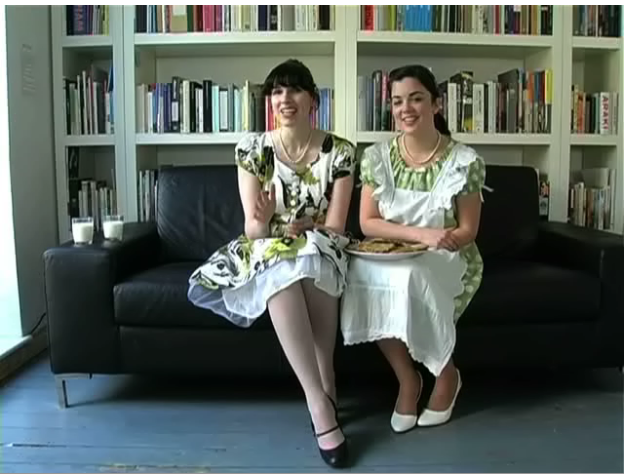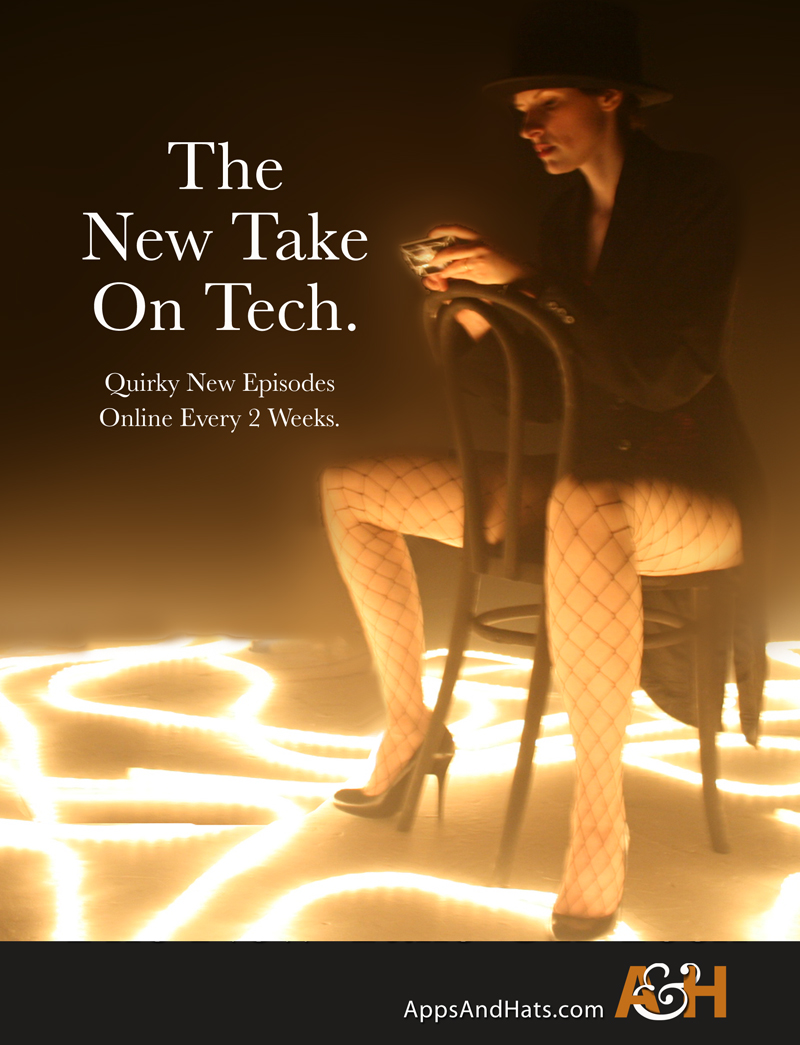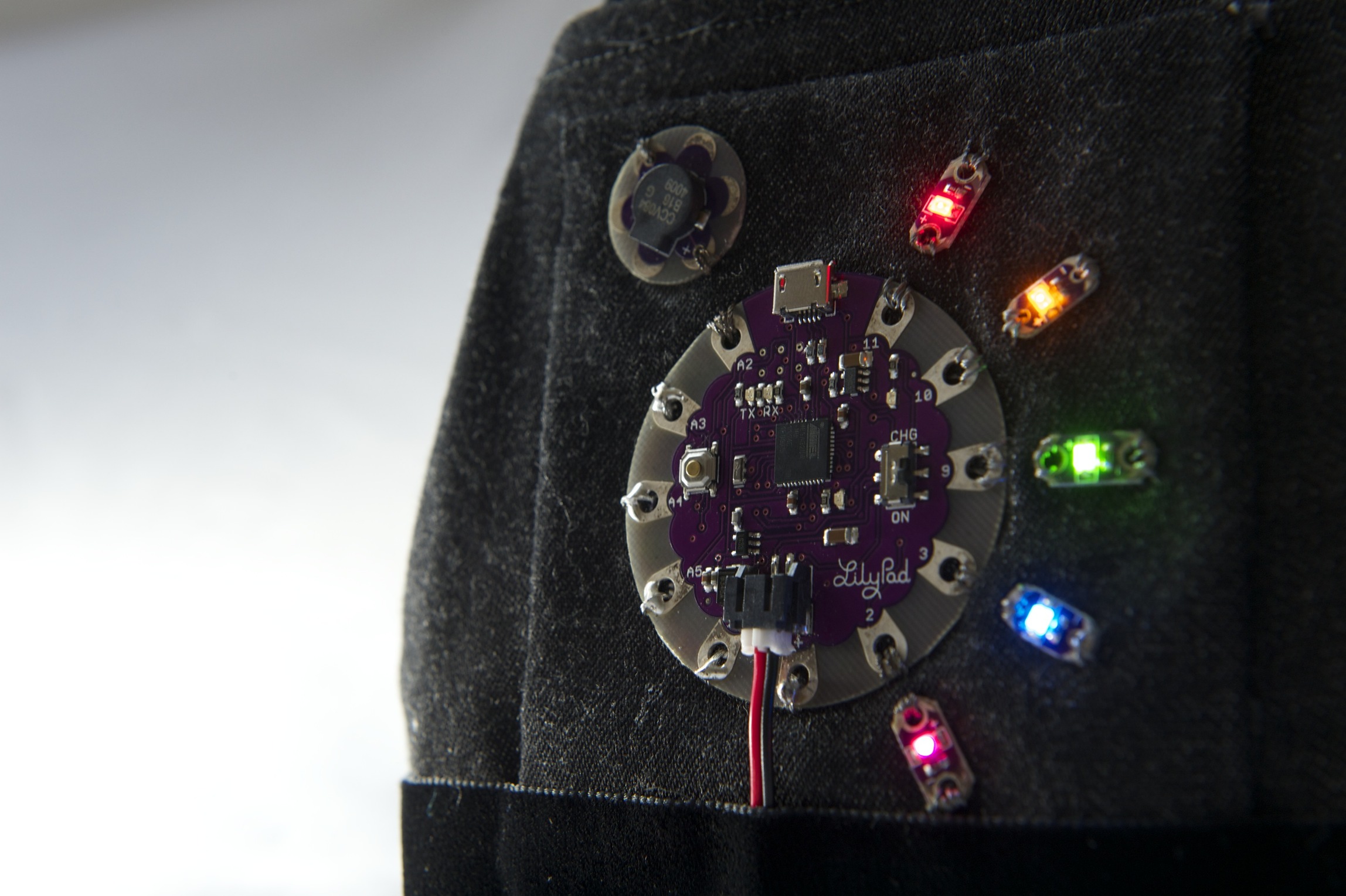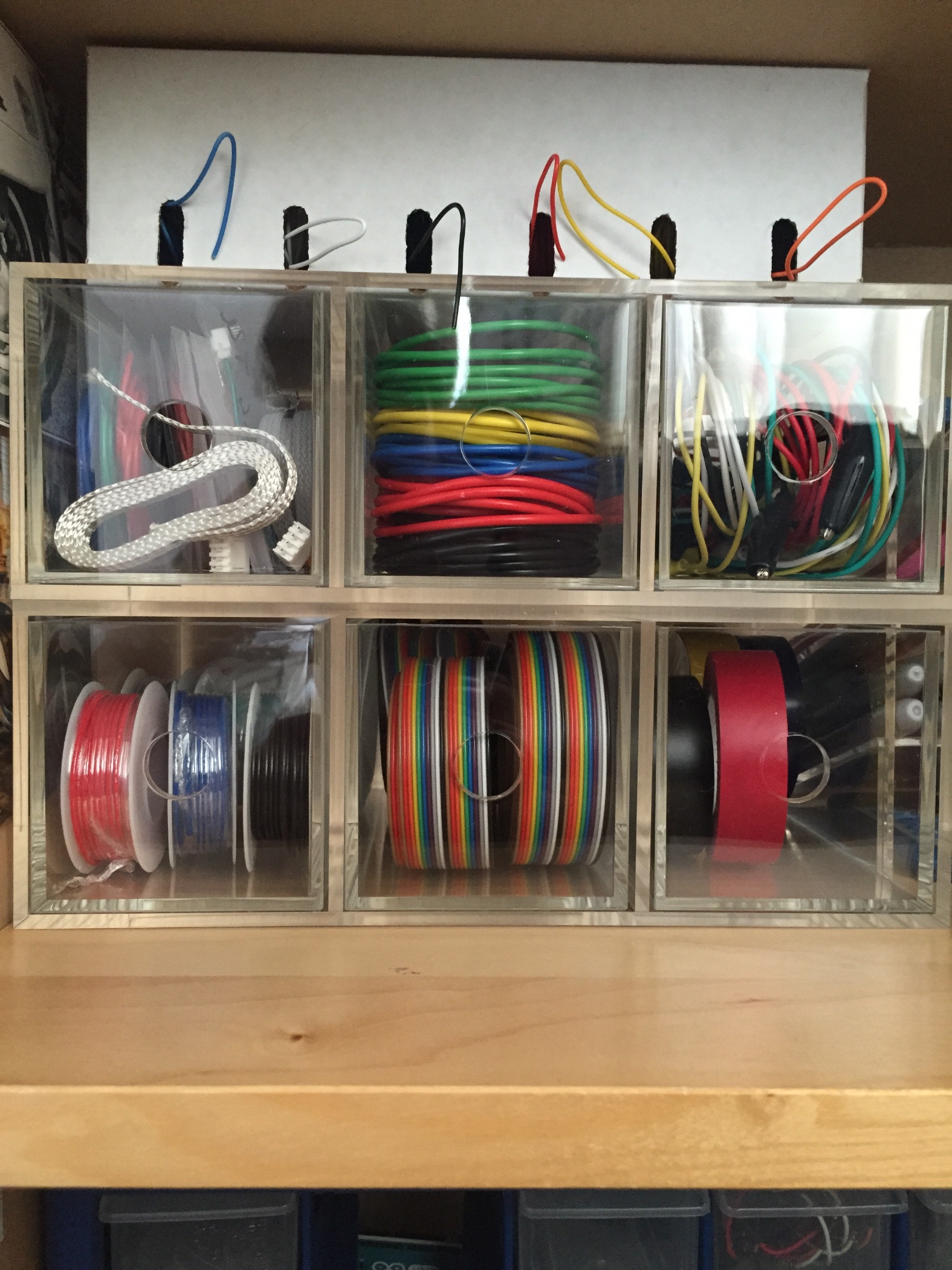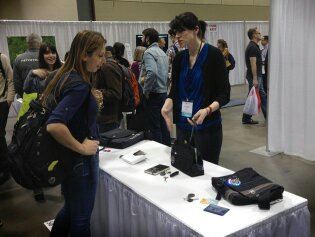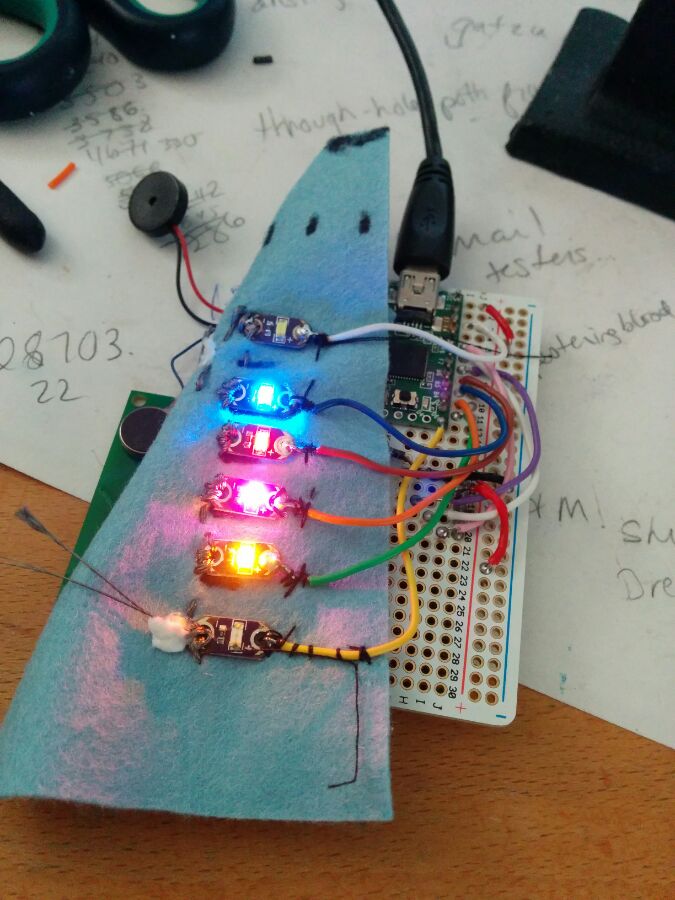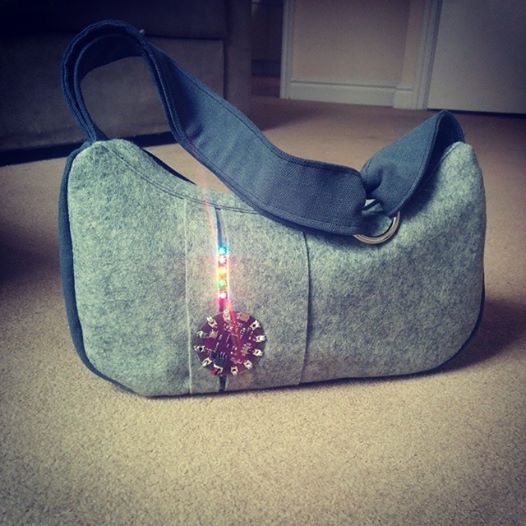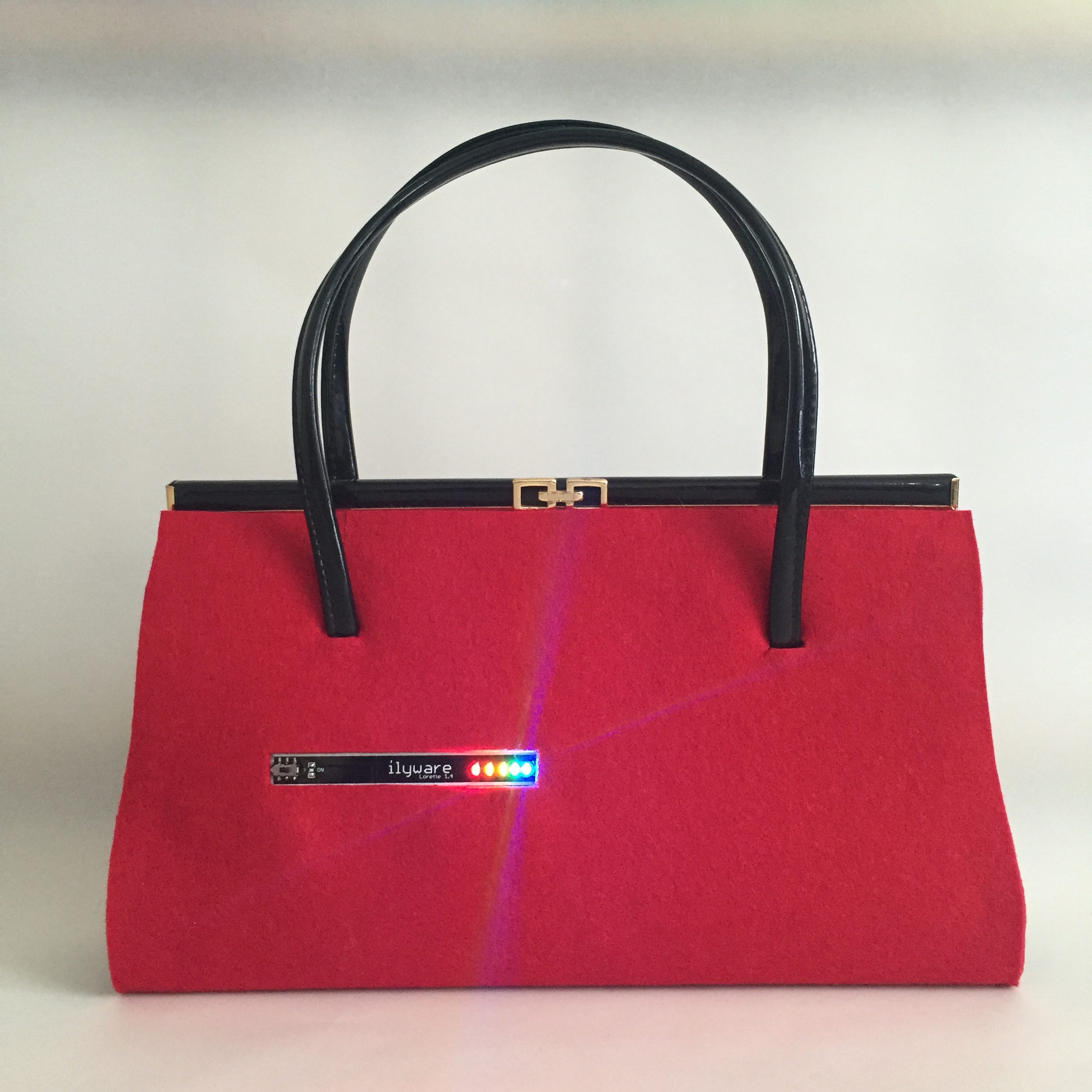I wanted to start our Interaction Design sessions this year with a high-energy session. More than that, I wanted to encourage students to feel confident to make rapid prototypes so they continued throughout the year.
Sometimes, students don’t have the confidence to create a prototype in its basic state. This is a great activity to show the value of creating a low-fidelity prototype.

Also, sometimes it’s difficult to see how we can construct shapes for the body from very straight hard materials. We started the session with simple exercises to learn how to make cuts with foamboard to create round and smooth curve shapes.
Following that, we create one object as a team with foamboard. It doesn’t matter too much what this item is, it’s for the practice and group work aspect. After that, the challenge is to create a piece for a body part.
I demonstrated some rapid prototypes I created for wearable technology designs.

We had 8 groups of around 4 people per group. They were each given a different body part for the task. We had neck, forearm, wrist, ankle, abdomen, knee, hands, and calf. For this challenge, they didn’t need to consider the function fully. I wanted them to get confident with just building the shape around an item (body part) that could be difficult. several had ideas as to how this would actually work as an item which was great to see. That follow through on their planning.
The session ended that day with the finished prototypes.
Adding Interaction
We then used another session to add interactivity to these items. They could remake the item, or just modify their existing designs. Both had value as it is good to see incremental designs and iterations.
All groups made very interesting prototypes, and were very different from each other.
The Challenge goals


They also were given a reflection exercise due a week later. It’s always important to think through why the exercise was valuable and what they have learned. For this task, I also gave them a TEI Template to create a 1-page document following that format.
The Results…
All the challenges that were responded to have very different results! they were so well thought out and creative. A very successful day of teamwork.








We also had Ahmed Zia create a prototype for ‘ear’, as an example for the teams to see. He chose a difficult body part! Here is his working design with moveable parts too. All using Arduino components. There is a hidden board in the earpiece, a servo motor, and NeoPixels.
Reference
A fantastic reference for cutting foamcore (foamboard) is this pdf file http://www.fastefoundation.org/resources/foamcore_construction.pdf it has many illustrations of types of cuts and joins to get the best out of your foamboard. From Rolf A. Faste Foundation for Design Creativity, [This work is licensed under the Creative Commons Attribution-NonCommercial 3.0 Unported License.
To view a copy of this license, visit http://creativecommons.org/licenses/by-nc/3.0/}
A sample from the TEI templates of the student work. A reflection is always a great way to consolidate learning.

Do you do prototyping in your teaching sessions? Anything you’d add? How do you make your sessions with high activity and energy levels?
